Michelle Nelson-Schmidt's Blog, page 38
November 21, 2024
What if Different Monster Species Trade Valuable Resources
If different monster species trade valuable resources, you'll find yourself in a vibrant marketplace. Rarity and demand play vital roles in determining each species' worth. For instance, high-demand creatures like Mima can skyrocket from 4,000 to 13,000 mushrooms. Strategic alliances form, enhancing trading prospects and making negotiations essential. Fluctuations in resource demand can shift values dramatically, affecting your trading decisions. Understanding these dynamics equips you to optimize your trades, while collaboration opens doors to high-value species. Curiosity about how these interactions shape future trends could provide even deeper insights into monster trading.
Key TakeawaysDifferent monster species possess unique resources, influencing their market value based on rarity and demand, shaping trading dynamics.High-demand species like Mima and Uk can significantly appreciate in value, driven by player interest and scarcity.Rarity impacts trading strategies, with limited availability of species like Karuku commanding higher prices and attracting serious collectors.Effective negotiation and strategic alliances among high-value species enhance trading prospects and can lead to profitable exchanges.Fluctuations in resource demand and market trends necessitate informed trading decisions to optimize profit and navigate evolving dynamics.The Concept of Resource Trading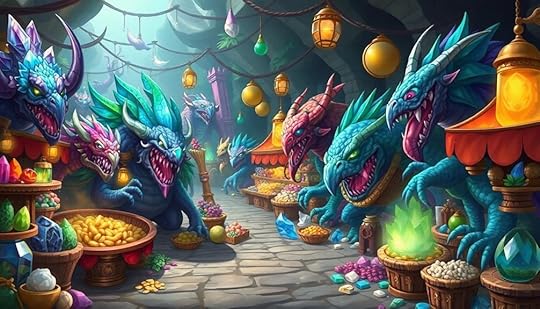
Resource trading in the monster species world is like a vibrant marketplace where players can exchange valuable creatures to maximize their gains.
You'll find that the trading dynamics are heavily influenced by rarity and demand. High-demand species, like the Mima, have skyrocketed in value from 4,000 to 13,000 mushrooms, reflecting their desirability among collectors.
As you navigate through these trades, keep an eye on species like the Uk, which saw its value leap from 30,000 to 80,000-90,000 mushrooms within just two months. This rapid appreciation often stems from event uncertainties, compelling you to make quick decisions.
Legendary species such as Parah and Xillion, valued between 13,000 and 15,000 mushrooms, are often seen as preferable trade options compared to less valuable creatures.
You should also consider the trading limits, like the 36,000 mushrooms cap for transactions involving species such as Karuku, which can reach up to 120,000 mushrooms.
This limitation shapes your trading strategy, forcing you to be strategic and consider the best timing and resources for maximizing your trades in this exciting economy.
Unique Resources of Each Species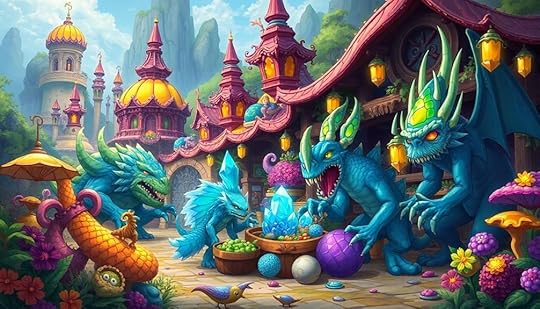
Every species in the monster trading ecosystem offers unique resources that can greatly influence their market value. Understanding these resources is key to making successful trades.
For instance, the Mima species has skyrocketed in value due to its rarity and growing demand, jumping from 4,000 to 13,000 mushrooms. Similarly, the Boreal Warden and Toria species hold significant value at 12,000 and 10,000 mushrooms, respectively.
Here are three unique resources that stand out:
Legendary Species: Creatures like Parah, Xillion, Pagon, and Lorel aren't just visually appealing; their statistics make them valuable, ranging from 13,000 to 15,000 mushrooms.Angelic Warden: Valued between 27,000 to 30,000 mushrooms, its design captivates traders, especially with the uncertainty surrounding the LSE Sky event.Uk: This species has shown a remarkable increase in value, climbing from 30,000 to an astounding 80,000-90,000 mushrooms in just two months, driven by its rarity and anticipated demand.Impact of Rarity on Value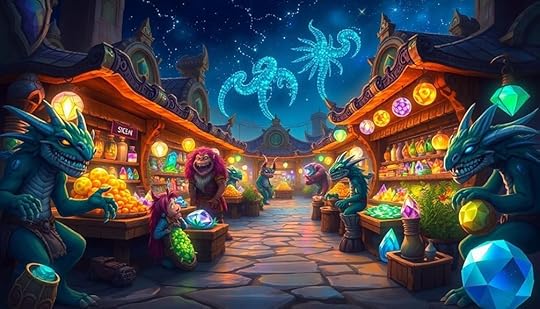
The unique resources of each species play an essential role in their market value, but rarity takes center stage in determining how much players are willing to pay. For instance, the Karuku is valued between 90,000 to 120,000 mushrooms, despite average stats, simply due to its limited availability. Similarly, the Uk's value skyrocketed from 30,000 to 80,000-90,000 mushrooms in a short span, fueled by its rarity and the uncertain LSE Sky events.
High-demand species like the Angelic Warden, valued at 27,000 to 30,000 mushrooms, also benefit from both rarity and an appealing design. This combination enhances their market presence and desirability. The trading dynamics shift dramatically with limited quantities of rare species, deterring casual players and sustaining higher price points. Featured shop legendaries, priced between 13,000 to 15,000 mushrooms, illustrate how rarity, paired with design appeal, can create strong demand among players.
SpeciesValue (Mushrooms)Karuku90,000 – 120,000Uk80,000 – 90,000Angelic Warden27,000 – 30,000Featured Legends13,000 – 15,000Strategic Alliances in Trading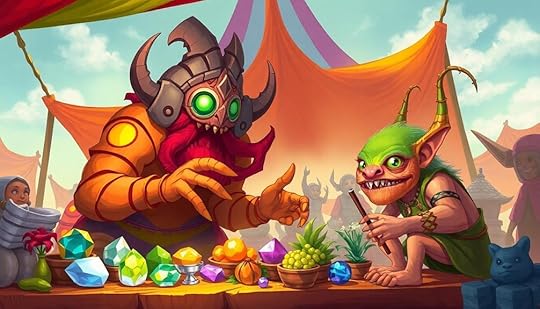
In today's trading landscape, forging strategic alliances among high-value species can greatly boost your trading prospects. By collaborating with species like the Angelic Warden and Uk, you can leverage their demand and rarity to attract more collectors.
This synergy not only enhances your trading portfolio but also increases the overall appeal of your offerings.
Here are three ways to maximize the benefits of strategic alliances:
Pair Rare Species: Collaborate with species like Karuku and shop legends like Parah to create a competitive trading environment. This draws interest from players who appreciate both aesthetics and statistics.Establish Trade Agreements: Form partnerships between Mima and Boreal Warden species with other valuable species. This diversification can stabilize the market by mitigating price volatility and ensuring a balanced resource exchange.Target Complementary Strengths: Combine the health and flight capabilities of species like Karuku with the design appeal of featured shop legends. This can greatly enhance the desirability of your trade offerings, making them more attractive to potential buyers.Fluctuations in Resource Demand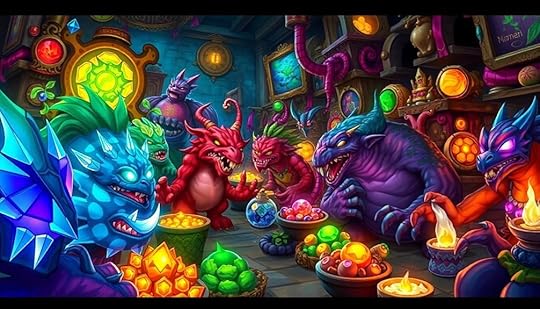
As strategic alliances shape the trading landscape, fluctuations in resource demand can greatly impact your trading decisions.
For instance, the value of species like Mima has skyrocketed from 4,000 to 13,000 mushrooms, reflecting a strong interest in certain resources. Similarly, the Angelic Warden now ranges from 27,000 to 30,000 mushrooms, largely due to market speculation surrounding the LSE Sky event's return.
You'll also notice how the value of Uk surged from 30,000 to between 80,000-90,000 mushrooms in just two months. This dramatic increase illustrates how player interest and event uncertainty can lead to rapid shifts in demand.
On the other hand, Karuku's valuation stands between 90,000 to 120,000 mushrooms, highlighting its status as the highest non-RO limited species, driven by both rarity and collector interest.
In a more stable segment, featured shop legendaries are valued between 13,000 to 15,000 mushrooms, suggesting a consistent demand for these resources.
The Role of Player Negotiation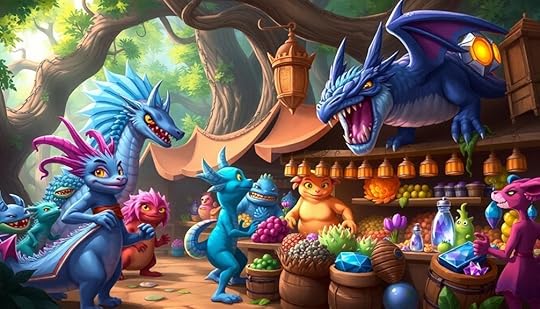
While traversing the trading landscape, understanding the role of player negotiation becomes essential for securing valuable species. Your ability to negotiate effectively can make or break a trade, especially when dealing with high-value species like Uk, valued at 80,000-90,000 mushrooms. The scarcity of these species means that skilled negotiators can leverage demand to clinch better deals.
Here are three key strategies to enhance your negotiation skills:
Know Your Limits: Understand the trading cap of 36,000 mushrooms per transaction for species like Karuku. Utilize this to plan multiple transactions and maximize your overall value.Assess Demand: High-demand species from the featured shop, such as Parah and Xillion, are worth negotiating aggressively for. Keep an eye on market trends to identify the best times to make your move.Adapt to Fluctuations: Species like Angelic Warden can have fluctuating values, especially during event speculation. Adjust your negotiation tactics accordingly to secure the best price.Trading Dynamics Among Species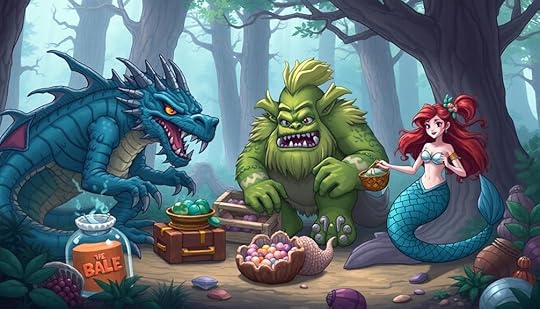
When you trade monster species, understanding their rarity and demand is essential to maximizing your gains.
Prices can fluctuate wildly based on player interest and event speculation, so staying informed is key.
Recognizing how these factors impact value will help you navigate the trading landscape more effectively.
Value Fluctuation FactorsUnderstanding the value fluctuation factors in monster species trading is essential for maneuvering this dynamic marketplace. Several elements greatly impact how values change, affecting your trading strategies and decisions.
Demand Trends: High-demand species like Mima have seen their values soar from 4,000 to 13,000 mushrooms. When demand stabilizes for specific species, their market value can become robust, making them attractive trading options.Event Speculation: The Angelic Warden's value, currently between 27,000 to 30,000 mushrooms, illustrates how upcoming events can stir speculation. When players anticipate events like the LSE Sky, they may rush to acquire certain species, driving prices up.Species Characteristics: While Karuku's value ranges from 90,000 to 120,000 mushrooms, its average health and damage limit its trade frequency.Even a high-value species can struggle if it doesn't meet player needs regarding performance.
Rarity and Demand ImpactRarity plays a significant role in shaping the demand and trading dynamics among monster species. As you navigate the trading landscape, you'll notice how species like Uk, valued at 80,000-90,000 mushrooms, attract collectors due to their limited availability. High-value species such as Karuku and Angelic Warden further illustrate this point, with Karuku commanding prices of 90,000 to 120,000 mushrooms despite average stats.
The demand for rarer species like Boreal Warden and Toria, valued at 12,000 and 10,000 mushrooms respectively, indicates that even less legendary options maintain stable trading environments when scarcity is present.
Here's a quick overview of some species and their values:
SpeciesValue (Mushrooms)Uk80,000 – 90,000Karuku90,000 – 120,000Boreal Warden12,000Toria10,000Parah & Lorel13,000 – 15,000Trading limitations, like the 36,000 mushrooms per transaction cap for Karuku, can also impact market accessibility for casual players seeking these rare species.
Economic Implications for Players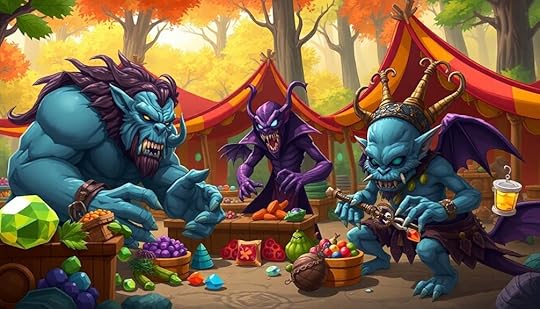
As you engage in the trading market, you'll notice how species values fluctuate dramatically, impacting your strategy.
The rising worth of high-demand species like Karuku can make it tough for casual players to enter the game.
Understanding these dynamics will help you navigate the competitive landscape more effectively.
Trading Dynamics AnalysisIn the world of monster species trading, players often find themselves maneuvering a market shaped by the rarity and value of different species. High-demand species like Uk, valued between 80,000 to 90,000 mushrooms, are coveted due to their limited availability and strong player interest. This creates a competitive environment where understanding trading dynamics is vital.
Key factors influencing trading dynamics include:
Design and Statistics: Players prefer featured shop legends, valued between 13,000 to 15,000 mushrooms, over lower-value options like Luxes due to their appealing designs and favorable statistics.Investment Opportunities: Species like Angelic Warden, rising from 27,000 to 30,000 mushrooms, present investment potential, especially amidst speculation about event returns.Market Accessibility: The average transaction limit of 36,000 mushrooms for non-RO limited species like Karuku can hinder casual players, impacting their ability to trade frequently and effectively.These dynamics not only affect your trading strategies but also shape the overall economic landscape, making it essential for you to stay informed and agile in your trading endeavors.
Species Value FluctuationsUnderstanding how species values fluctuate directly impacts your trading strategies. Keeping an eye on these shifts can help you make informed decisions, optimizing your trades for profit. For instance, Mima's trading value jumped from 4,000 to 13,000 mushrooms, reflecting the demand-driven nature of species valuation. Meanwhile, species like Parah, Xillion, Pagon, and Lorel are valued between 13,000 and 15,000 mushrooms due to their popularity among players.
On the higher end, the Angelic Warden fluctuates between 27,000 and 30,000 mushrooms, driven by speculation around the LSE Sky event. Significantly, Uk's value skyrocketed from 30,000 to 80,000-90,000 mushrooms in just two months, showcasing how rarity and player interest can impact trading dynamics.
To illustrate these fluctuations, consider the following table:
SpeciesCurrent Value (Mushrooms)Factors Influencing ValueMima13,000Increased demandAngelic Warden27,000 – 30,000Event speculationUk80,000 – 90,000Rarity and player interestEnhancing Gameplay Through Collaboration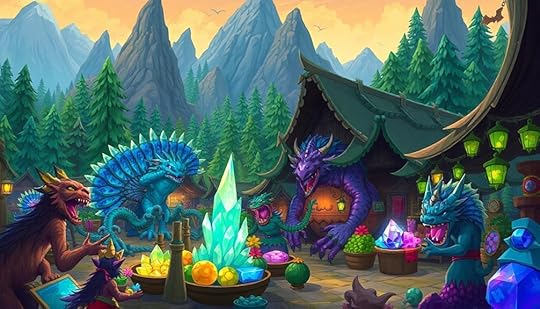
How can players truly elevate their gameplay experience? By collaborating and trading with fellow players, you can open up a world of benefits. Resource sharing makes it easier to access high-value species, enhancing your strategic options and market maneuverability.
Here are three key advantages of collaborative trading:
Access to Rare Species: By pooling resources, you can acquire valuable species like the Angelic Warden, which can fetch between 27,000 to 30,000 mushrooms. Teaming up increases your chances of landing these high-value trades.Mitigating Market Risks: Engaging in species trading allows you to navigate market dynamics more effectively. Collaboration helps you capitalize on stable demand for legendary species, valued between 13,000 to 15,000 mushrooms, thereby reducing individual financial risks.Building Alliances: Forming alliances enables you to collectively chase after rare species like Mima and Boreal Warden. With values of 13,000 and 12,000 mushrooms, respectively, these partnerships can greatly enhance your trading power.In essence, collaboration creates a thriving trading environment, making your gameplay not only more enjoyable but also strategically advantageous.
Future of Monster Resource Trading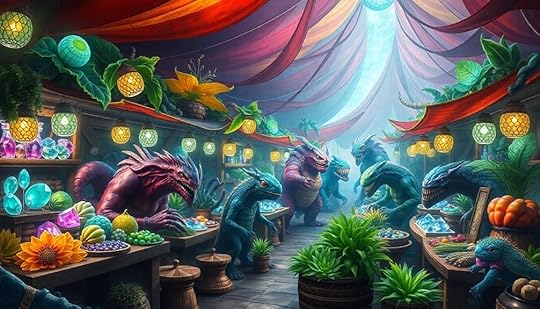
As you explore the future of monster resource trading, you'll notice evolving market trends that highlight the importance of rarity and demand.
High-value species like Mima will likely continue to draw interest, while emerging legends could reshape trading dynamics.
Keep an eye on how speculation around events influences species values, as it can greatly impact your trading strategies.
Evolving Market TrendsThe future of monster resource trading is shaping up to be dynamic and exciting, with trends pointing towards a growing appreciation for rare and unique species.
You'll notice that the value of high-demand monsters, like Uk, has skyrocketed from 30,000 to 80,000-90,000 mushrooms in just two months, showcasing a rapid shift in market dynamics. The emergence of limited-time species, such as Karuku, valued between 90,000 to 120,000 mushrooms, further indicates a flourishing market for exclusive creatures.
Here are three key trends to watch:
Increased Valuation: Rare species are becoming valuable trading assets, reflecting a broader market trend.Collector's Market: Limited-time offerings and featured shop legendaries like Parah and Xillion are driving interest among traders, with values ranging from 13,000 to 15,000 mushrooms.Market Speculation: The rising value of the Angelic Warden, currently between 27,000 to 30,000 mushrooms, illustrates how player interest and speculation can greatly influence trading dynamics.As these trends continue to evolve, staying informed will be essential for steering through the exciting world of monster resource trading.
Rarity and DemandIn the world of monster resource trading, rarity and demand are intertwined forces that dictate market values and trading strategies.
Take the Uk, for instance; its value skyrocketed from 30,000 to an impressive 80,000-90,000 mushrooms in just two months. This surge reflects the high demand coupled with limited availability, showing how quickly a rare species can become a hot commodity.
Similarly, the Karuku stands as the highest-valued non-RO limited species, with prices ranging from 90,000 to 120,000 mushrooms, illustrating that rarity often trumps average stats when it comes to trading.
On the other hand, the Angelic Warden's fluctuating value between 27,000 to 30,000 mushrooms highlights how external factors, like event returns, can create uncertainty in demand.
Meanwhile, you'll find legendaries like Parah and Xillion holding steady values between 13,000 to 15,000 mushrooms, suggesting a stable market for high-value species.
Remember, the consistent trading limit of 36,000 mushrooms for species like Karuku emphasizes the need for careful resource management.
In this dynamic market, understanding rarity and demand is essential for successful trading strategies.
ConclusionIn this vibrant world of monster resource trading, you'll find that 63% of players prefer collaborating with different species to maximize their gains. This not only enriches your gameplay but also fosters unique alliances. By tapping into the distinctive resources each monster offers, you can create a thriving trade network that adapts to market demands. Embrace the differences, and watch as your strategic partnerships lead to unprecedented success in your adventures!
Rhyolite Ghost Town: Nevada’s Most Haunted Desert Ruins
Rhyolite Ghost Town, once thriving with around 5,000 residents during the gold rush, now stands as Nevada's most haunted desert ruins. You can explore its eerie streets and witness the remnants of its past, including the iconic Cook Bank Building and Tom Kelly's Bottle House. Legends swirl around ghosts, like the spirit of Mona Belle, sighted near her grave. Nighttime ghost tours reveal chilling stories and eerie experiences. With no admission fee, it's an easily accessible destination. You'll discover fascinating stories waiting to unfold as you immerse yourself in the haunting atmosphere of this historical gem.
Key TakeawaysRhyolite Ghost Town, established in 1904, is known for its rich history and dramatic decline following the mining boom.Legends of haunted spirits, including the ghost of Mona Belle, draw ghost hunters and enthusiasts to the site.Visitors report eerie experiences, such as cold spots and disembodied voices, particularly during nighttime ghost tours.Iconic structures like Tom Kelly's Bottle House and the Cook Bank Building showcase the town's architectural heritage.The nearby Goldwell Open Air Museum features surreal sculptures, enhancing Rhyolite's cultural and artistic appeal.History of RhyoliteRhyolite, once a bustling mining town, sprang to life in 1904 after gold was discovered by prospectors Shorty Harris and E.L. Cross in the Bullfrog Hills. The excitement of the gold rush drew thousands, and at its peak around 1907-1908, Rhyolite boasted a population of about 5,000 residents.
You'd find numerous saloons, banks, and commercial establishments thriving in this desert oasis. One of the most notable buildings was the Cook Bank Building, a symbol of the town's brief prosperity.
However, the fortunes of Rhyolite began to wane after the financial panic of 1907 and the depletion of gold reserves. By 1911, many mines had closed, marking the beginning of the end for this once-vibrant community.
The decline was swift, and by 1920, only 14 residents remained. What was once a lively gold rush town became a ghost town, with most buildings abandoned or in disrepair.
Today, Rhyolite stands as a reflection of the fleeting nature of wealth and ambition, with remnants like the iconic Bottle House and the Cook Bank serving as reminders of its storied past.
Haunting Legends and Folklore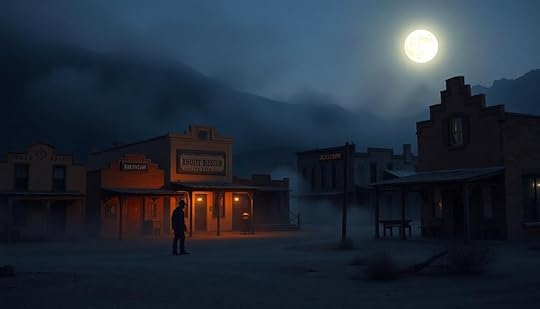
Amidst the remnants of Rhyolite's once-thriving streets, haunting legends and folklore breathe life into the desolate landscape. One of the most famous tales is the legend of Mona Belle, a local figure murdered in 1908. Her ghost is said to wander the ghost town, particularly near her burial site, where visitors often report eerie feelings and the unsettling sound of recorded electronic voice phenomena (EVPs).
You might catch a glimpse of a woman in white near the old train depot or encounter ghostly apparitions lurking in the crumbling buildings. These sightings contribute to Rhyolite's reputation as a haunted destination, filled with stories that spark the imagination.
Local lore also suggests that the spirits of miners who never left after their deaths roam the area, adding to the supernatural allure for explorers.
As you walk through Rhyolite, the air thickens with tales of the past—an intriguing blend of history and haunting experiences. Ghost hunters and enthusiasts alike are drawn to the town, keen to uncover its mysteries and connect with the restless souls that linger in this once-bustling gold rush hub.
Notable Attractions and Structures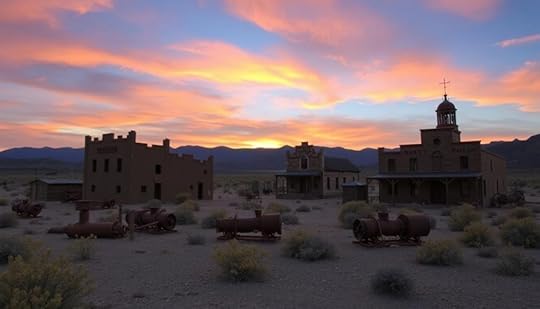
When you explore Rhyolite, you can't miss the iconic Bottle House, a creative marvel made from over 50,000 glass bottles.
The historic Cook Bank Building and the train depot nearby offer a glimpse into the town's bustling past.
Plus, the Goldwell Open Air Museum adds a modern twist with its fascinating art installations set against the stark desert backdrop.
Tom Kelly's Bottle HouseOne of the most fascinating attractions in Rhyolite is Tom Kelly's Bottle House, a remarkable structure constructed in 1906 from around 50,000 discarded glass bottles.
This unique creation highlights the resourcefulness of Rhyolite's residents during the decline of this once-thriving mining town. As the oldest and largest known bottle house in the U.S., it stands as a tribute to the innovative spirit of the people who called this ghost town home.
The Bottle House isn't just an architectural oddity; it also served as a film set for the 1926 Paramount movie "The Air Mail," showcasing its cultural significance beyond Rhyolite.
While exploring the ghost town, you'll find that the Bottle House attracts visitors intrigued by its quirky design and the story behind its creation.
Thanks to dedicated restoration efforts, the Bottle House remains a free and accessible attraction, allowing tourists to step back in time and appreciate the history surrounding Rhyolite.
When you visit, you'll be captivated not only by its beauty but also by the resilience that shaped this remarkable structure in the heart of the Nevada desert.
Goldwell Open Air MuseumAfter exploring Tom Kelly's Bottle House, you'll want to check out the Goldwell Open Air Museum, a remarkable artistic oasis nestled just outside Rhyolite. Established in the 1980s by Belgian artist Albert Szukalski and fellow creatives, this unique museum features striking large-scale sculptures that harmonize with the desert landscape.
One of the museum's highlights is "The Last Supper," a surreal take on the famous biblical scene that captivates visitors with its imaginative presence. As you wander through the museum, you'll encounter around a dozen art installations, including the intriguing "Venus of Nevada" and the haunting "Ghost Rider."
Each piece contributes to the eerie ambiance of Rhyolite's ghost town, creating a compelling clash of culture and history. Best of all, admission to the Goldwell Open Air Museum is free, making it an accessible stop for anyone exploring the historical ruins of Rhyolite.
Historic Bank and DepotThe Cook Bank Building stands as a striking reminder of Rhyolite's brief yet vibrant history during the gold rush era. Completed in 1908, this historic bank was the largest structure in town, showcasing early 20th-century architecture that reflects the prosperity Rhyolite experienced when gold was discovered nearby.
It played a significant role in the town's economy, serving various financial institutions until the mine closures led to its inevitable abandonment.
Nearby, the Rhyolite Train Station, built by the Las Vegas and Tonopah Railroad, was another key attraction. With a construction cost of $130,000, it served as an essential transportation hub for the bustling town before its decline.
The depot's distinct architectural features have become iconic symbols of this ghost town's historical significance, enchanting visitors who wander through the remnants of the past.
Exploring these structures allows you to glimpse the rapid rise and fall of Rhyolite during the mining boom. As you walk through the once-bustling streets, the stories of the past echo around you, reminding you of a time when hope and prosperity filled the air in this now silent desert town.
Visitor Experience and Access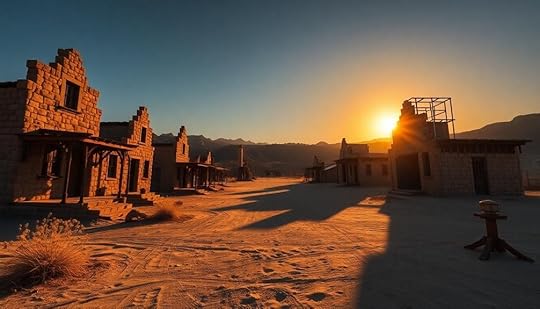
Exploring Rhyolite ghost town is a fascinating journey into Nevada's past, where you can wander among the haunting ruins and immerse yourself in its eerie atmosphere.
Open daily from sunrise to sunset, Rhyolite provides plenty of time for you to explore its historical remnants at your own pace. The best part? Admission is completely free, making access easy for everyone who wants to experience this unique ghost town.
Managed by the Nevada Bureau of Land Management, Rhyolite is preserved for future generations, ensuring that you can investigate its rich history without barriers.
While wandering through the ghost town, you'll find iconic sites like the Tom Kelly Bottle House, which adds to your visitor experience. If you're looking to enhance your trip, consider visiting during the cooler months when the weather is more comfortable.
Nearby Beatty offers additional attractions and amenities, making your visit to Rhyolite even more enjoyable.
Whether you're a history buff or just seeking a thrilling adventure, Rhyolite ghost town welcomes you to discover its eerie past and enthralling stories.
Ghost Tours and Photography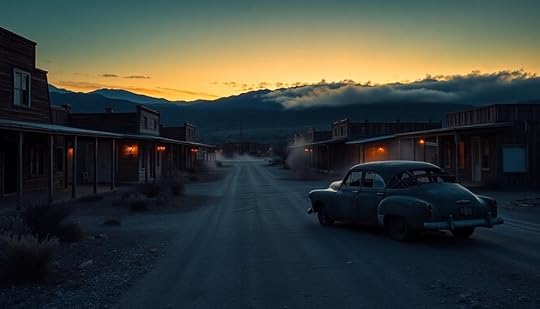
When you join a nighttime ghost tour in Rhyolite, you'll uncover chilling stories and explore haunted sites like the town jail and Isabel Haskins' grave.
If you're into photography, you'll want to capture the eerie beauty of the ruins, especially during twilight when the atmosphere is at its spookiest.
With a few tips and tricks, you can enhance your ghostly images and make the most of your visit.
Nighttime Ghost ToursNighttime ghost tours in Rhyolite offer a spine-chilling experience that immerses you in the eerie ambiance of this ghost town. As twilight descends, you'll find yourself exploring significant sites like the jail, Isabel Haskins' grave, and the haunting mine entrance. The guided tours bring to life the town's haunted lore while increasing your chances of encountering the supernatural.
Tour HighlightsEerie ExperiencesJail with ghostly whispersUnexplained cold spotsIsabel Haskins' graveShadows moving in the darkMine entrance echoesDisembodied voicesReports of strange phenomena have attracted ghost hunters and paranormal enthusiasts alike, making Rhyolite a hotspot for supernatural exploration. Engaging in these nighttime ghost tours not only lets you connect with local legends but also deepens your appreciation for the history that permeates this desolate land. As you traverse the ruins, the thrill of the unknown awaits, and you may just uncover a story that's longing to be told.
Photography Tips and TricksCapturing the ghostly essence of Rhyolite during your visit can enhance your experience of the town's haunting beauty. For ideal results, aim to photograph the ghost town's ruins around 7:00 p.m., during the gloaming hour. The atmospheric lighting at dusk will add an eerie ambiance to your shots.
Experiment with different angles and perspectives to highlight the historical significance of structures like the Cook Bank Building and the Bottle House. Using a camera with manual settings allows you to control exposure, helping you capture the contrasts of light and shadow that make these ruins hauntingly beautiful.
Consider venturing to the cemetery or the old jail at night for opportunities to snap unexplained phenomena. A tripod is essential here, providing stability for longer exposure times.
Don't forget to bring a flashlight and extra batteries to navigate dimly lit areas. This equipment will help you illuminate your subject effectively and frame your shots.
With these tips, you'll be well on your way to capturing the ethereal spirit of Rhyolite, making your ghostly adventure truly unforgettable.
The Goldwell Open Air Museum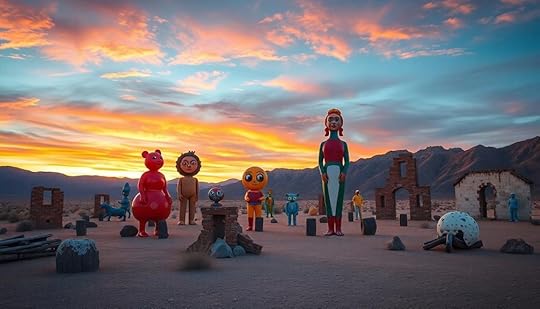
Nestled on the outskirts of Rhyolite, the Goldwell Open Air Museum offers a striking juxtaposition of art and desolation. Established in the 1980s by Belgian artists, this unique museum features a collection of large-scale sculptures that breathe life into the haunting landscape of the ghost town.
Among these intriguing pieces, you'll find the iconic "The Last Supper" by Albert Szukalski, which stands as a proof of creativity within a forgotten setting.
As you wander through the open-air museum, around a dozen sculptures, including the "Venus of Nevada" and the "Ghost Rider," grab your attention. They create a remarkable contrast against the crumbling ruins of Rhyolite, enriching the visual narrative of the area.
The museum's surreal art installations not only enhance the eerie charm of the desert landscape but also attract art lovers and ghost town enthusiasts alike.
The Goldwell Open Air Museum is accessible year-round and charges no admission fee, making it an inviting destination for those seeking unique artistic experiences.
Preservation and Cultural Impact
How does Rhyolite's ghost town status reflect the broader narrative of Nevada's mining history? It serves as a poignant reminder of the boom-and-bust cycles that characterized many mining towns across the state.
Preservation efforts by local organizations focus on restoring key structures and protecting artifacts, ensuring that Rhyolite's cultural heritage remains intact. You'll notice the dedication to maintaining the town's historical context through educational programs and interpretive signs, which help visitors grasp the significance of this once-thriving location.
The Goldwell Open Air Museum enhances Rhyolite's cultural impact by showcasing unique art installations that attract visitors and enrich their experience.
This blend of historical remnants and contemporary art makes Rhyolite a significant site for heritage tourism, drawing ghost hunters and cultural explorers alike.
Frequently Asked QuestionsWhy Was Rhyolite Ghost Town Abandoned?Rhyolite was abandoned due to depleting gold reserves, which led to mine closures and residents leaving. By 1914, essential services vanished, and by 1924, only a few remained, ultimately leading to complete abandonment.
Is Rhyolite Ghost Town Worth Visiting?Oh, absolutely! Who wouldn't want to wander through a charming relic of a forgotten era? You'll revel in the eerie ambiance, explore unique architecture, and perhaps even capture a ghostly friend for your photos!
What Are Some Interesting Facts About Rhyolite Ghost Town?You'll discover Rhyolite's unique history, like its peak population during the gold rush, the stunning Bottle House made of glass bottles, and the eerie tales of ghostly apparitions that still captivate visitors today.
Does Anyone Live in Rhyolite, Nevada?No, no one's living in Rhyolite, Nevada. The town's completely abandoned, with only a few remnants of its past. Visitors explore its historical sites, but you'll find no permanent residents there today.
ConclusionRhyolite stands as a ghostly mirror reflecting the dreams and despair of a bygone era. As you wander its crumbling ruins, you uncover stories etched in the desert's sands, whispers of the past echoing through time. The haunting presence of this once-thriving town invites you to grasp the fleeting nature of prosperity and the permanence of memory. In Rhyolite, every shadow tells a tale, urging you to connect with its history and embrace the beauty of impermanence.
November 20, 2024
What if Monsters Have Their Own Educational Systems
If monsters had their own educational systems, it would create spaces tailored to their unique needs and cultures. You'd see specialized subjects like Monster History and Monstrous Ethics, which would help foster a sense of identity. These schools would focus on empathy and understanding, bridging the gap between monsters and humans. However, challenges like elitism and anti-human sentiment could hinder progress. Technology would play a key role, offering adaptive tools for personalized learning. This system could lead to greater acceptance and collaboration. Curious about how these ideas could shape a more inclusive monster education? Keep exploring this fascinating topic!
Key TakeawaysMonster educational systems would focus on literacy and math, crucial for societal integration and reducing isolation among young monsters.A unique curriculum tailored to monsters would include subjects like Monster History and Monstrous Ethics, promoting cultural appreciation and identity development.Adaptive learning tools and technology, such as Ecto-Laptops, would cater to diverse learning needs and enhance personalized support for monster students.Social dynamics within monster schools would address issues like elitism and anti-human sentiment, fostering inclusivity and collaboration between monster and human communities.Future educational systems would prioritize ethical considerations and collaborative learning, preparing monsters for responsible integration into society.Significance of Monster Education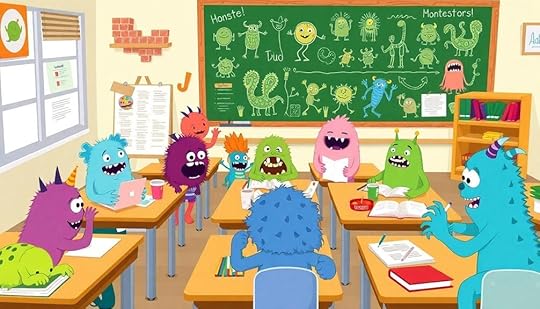
Education plays a significant role in shaping the lives of monsters, just as it does for humans. In monster schools, acquiring essential skills like literacy and math is fundamental for integrating into modern society. Without proper education, young monsters may struggle to navigate the complexities of their world, which can lead to isolation and misunderstanding.
Unfortunately, the current landscape of monster education isn't perfect. Institutions like Miss Grimwood's Finishing School often display elitism and lack qualified educators, limiting educational quality.
On the other hand, Gravedale High offers a more inclusive environment but still grapples with challenges such as anti-human sentiment and insufficient support staff.
While schools like Monster High focus on socialization, this emphasis can detract from the depth of formal instruction. Consequently, students might miss significant academic foundations.
Investigations into these educational systems reveal pressing issues regarding accessibility and equity. Many monsters lack access to quality education, which highlights an urgent need for community outreach and support programs.
Unique Curriculum for Monsters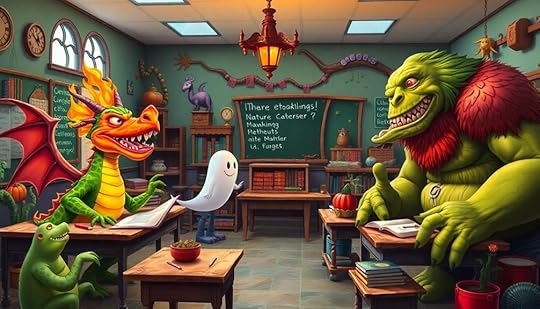
When designing a unique curriculum for monsters, you'll want to focus on monster-specific subjects that cater to their distinct abilities and cultures.
Adaptive learning tools, like Ecto-Laptops and specialized teaching methods, can enhance the educational experience for all creatures.
Integrating cultural classes will also help students appreciate their heritage while fostering a sense of community among diverse species.
Monster-Specific SubjectsMonsters have unique needs and experiences that shape their educational journeys, leading to the creation of specialized subjects just for them. In monster high school, students immerse themselves in a curriculum tailored to their distinct backgrounds and challenges.
Here's a glimpse into some of these engaging subjects:
SubjectDescriptionTarget StudentsMonster HistoryExplores the evolution and cultural significance of monsters across societies.All monster speciesHuman InteractionTeaches communication strategies for managing relationships with humans and other monsters.Socially inclined monstersCrisis Management for CreaturesProvides coping strategies for werewolves and transformative monsters during full moons.Transformative monstersEcto-Learning ToolsUtilizes specialized technology for ghost students, like ecto-laptops.Ghost studentsMonstrous EthicsEncourages discussions about the moral implications of powers, fostering responsibility.All monster speciesThese subjects not only equip monsters with essential skills, but they also help build a sense of community and understanding among them. By focusing on their unique experiences, monster high school guarantees that every student can thrive.
Adaptive Learning ToolsFrequently, adaptive learning tools play an essential role in tailoring education for monster students. These tools cater to unique abilities and challenges, ensuring each monster receives personalized support. For instance, ghost students might use ecto-laptops for note-taking, while werewolves may benefit from counseling sessions to manage transformations during full moons.
The curriculum designed for monsters could include specialized classes, such as monster history and physical education that accommodates various abilities. With technology integration, data analytics can adjust learning experiences based on each student's strengths and weaknesses, enhancing their educational journey.
Assessment methods would also need to evolve. Instead of traditional standardized tests, performance-based evaluations could measure practical skills, like scaring techniques or shape-shifting abilities. This approach not only recognizes the diverse talents of monster students but also validates their unique experiences.
Moreover, community outreach programs could help bridge the gap between monster students and their human counterparts. By fostering understanding and collaboration, these initiatives address anti-human sentiments, creating a more inclusive educational environment.
Cultural Integration ClassesAdaptive learning tools set the stage for Cultural Integration Classes, which adapt traditional subjects to reflect the unique experiences of monster students. These classes focus on the cultural significance of various monster abilities and the history of monster-human relations, fostering a deeper understanding among students.
Monster Ethics: Explore moral implications of unique abilities and societal roles.Empathy Building: Understand both monster and human perspectives to reduce anti-human sentiment.Hands-On Learning: Engage in field trips to significant monster heritage sites, strengthening cultural identity.Cultural Integration Classes provide unique tools tailored for different types of monsters, like ecto-laptops for ghost students or specialized counseling for werewolves during full moons. This guarantees every student can effectively engage with the curriculum.
By emphasizing cultural adaptation lessons, these classes promote empathy and critical thinking, helping students navigate their identities in a diverse world.
Incorporating hands-on experiences not only enriches learning but also instills pride in their cultural heritage. Ultimately, these classes pave the way for a more inclusive society, where monsters and humans can coexist, appreciating each other's cultural significance.
Challenges in Monster Schools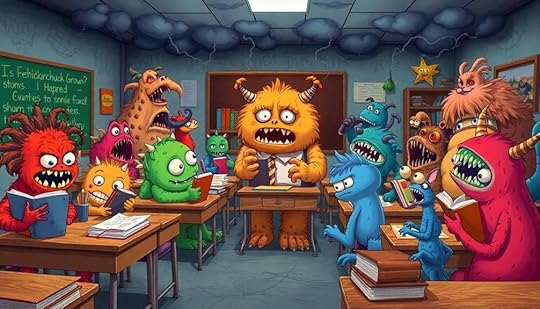
Education in monster schools faces a range of significant challenges that impact students' learning experiences. Many institutions, like Miss Grimwood's Finishing School, prioritize elitism, catering only to the children of famous monsters. This exclusivity limits accessibility and quality for the broader monster community.
You might also notice a troubling lack of qualified educators, with some schools employing underqualified teachers—like a teenage instructor or even a talking dog—which compromises the educational experience.
Another challenge in monster schools is the prevalent anti-human sentiment among students at places like Gravedale High. This animosity underscores the urgent need for community outreach and support programs to foster understanding between human teachers and monster students.
Furthermore, different types of monsters have unique educational needs; for instance, ghosts require ecto-laptops, while werewolves might need counseling during full moons.
Social Dynamics Among Monsters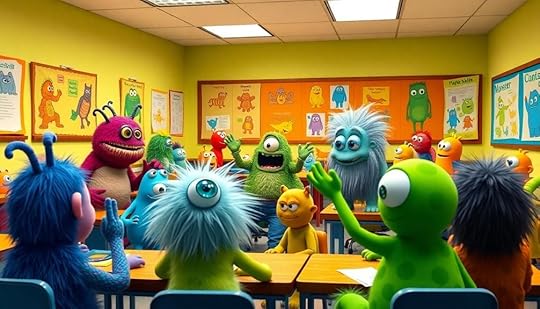
Maneuvering the social dynamics among monsters in educational settings reveals a complex web of hierarchies and interactions. Popular monster types, like vampires and werewolves, often dominate social circles, overshadowing others such as ghosts and mummies. This stratification can lead to division and tension, particularly fuelled by anti-human sentiment among students.
Elitism thrives in institutions like Miss Grimwood's Finishing School, where only the offspring of renowned monsters gain entry.
Cliques form, reinforcing stereotypes and biases within the community, making it tough for some monsters to feel accepted.
Extracurricular activities, like those at Monster High, can sometimes take precedence over academics, prioritizing socialization over personal growth.
In these environments, peer interactions highlight the unique challenges faced by monsters. As they navigate their identities, they often need support from counselors and staff, especially in a society that leans heavily towards human-centric values.
Understanding these social dynamics is essential, as they shape the educational experiences and long-term outcomes for young monsters, influencing how they view themselves and their place in the world.
Integration With Human Society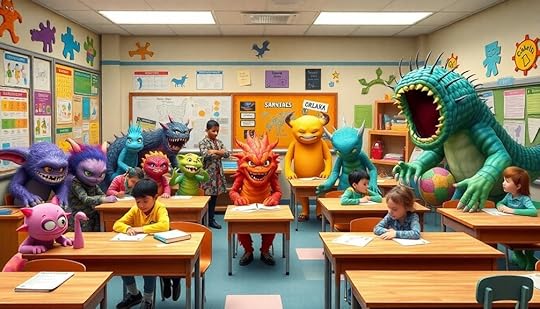
Integrating monster educational systems with human society can create a dynamic yet challenging landscape for both groups. To make this integration successful, you'll need to address the anti-human sentiment that some monster students, like Frankenstein's monster, might harbor. Fostering understanding and collaboration is vital.
Unique challenges arise, requiring tailored curricula that reflect both monster and human perspectives, ensuring all students feel included in shared learning environments. Community outreach programs can bridge the gap, promoting acceptance and collaboration. These initiatives enrich educational experiences by allowing both monsters and humans to learn from one another.
Establishing counseling and support services for monster students is essential, especially for those with specific needs, such as werewolves during full moons.
Moreover, the coexistence of these educational systems can lead to innovative cross-disciplinary programs. Imagine incorporating monster history and abilities into broader curricula, enriching the educational frameworks for everyone involved.
Development of Monster Identity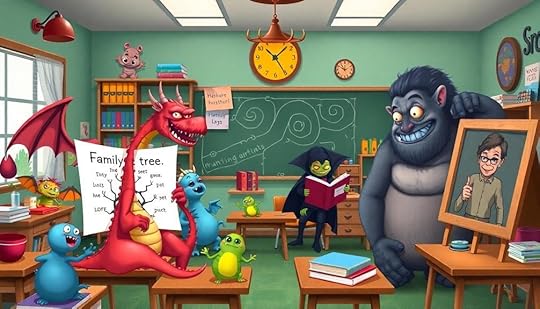
In guiding the complexities of monster identity, understanding the interplay of unique abilities, cultural backgrounds, and societal perceptions is essential. The development of monster identity relies heavily on tailored educational experiences that recognize these factors. By creating specialized classes, monsters can better navigate their unique challenges.
Cultural Pride: Curriculum design should celebrate the history and contributions of various monster cultures.Socialization: Schools foster interactions that help students tackle anti-monster sentiments and build resilience.Heritage Exploration: Incorporating folklore and mythology deepens monsters' understanding of their identity.These educational programs could include courses like "Moon Phases and Werewolf Management" for werewolves or "Survival Skills for Ghosts," which focus on their specific needs.
Socialization is vital, as it not only helps students embrace their hybrid identities but also promotes acceptance within both monster and human societies.
Through these initiatives, monsters can cultivate a strong sense of belonging and pride in their identities.
Role of Technology in Education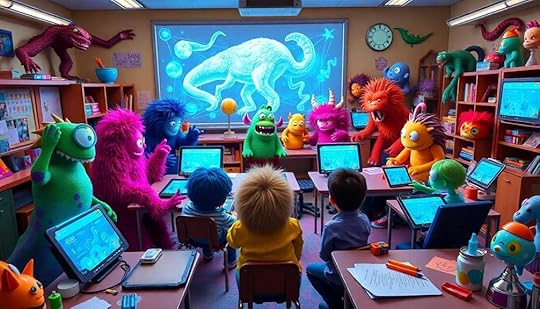
In today's monster education landscape, embracing ed-tech innovations is essential for meeting diverse learning needs.
With the rise in sophisticated cyber threats, ensuring AI security in educational technologies can help protect sensitive student data and enhance learning experiences.
You'll find that unique tools like ecto-laptops and AI-driven resources can transform how monsters engage with their studies.
Ed-Tech Innovations for MonstersTechnology's role in monster education is transforming how these unique students learn and interact. With ed-tech innovations for monsters, high school becomes a vibrant space tailored to their needs. Imagine a learning environment where each monster can thrive, thanks to specialized tools and engaging platforms.
Ecto-laptops designed for ghost students help manage their unique challenges.Virtual reality environments simulate real-world experiences for practicing social interactions.AI-driven personalized learning platforms adapt curricula to reflect each student's strengths.These innovations not only make learning more accessible but also create a more inclusive atmosphere. Gamification elements can drive engagement, tapping into monsters' competitive nature while promoting teamwork.
Collaborative digital spaces encourage cooperation among various monster species, fostering understanding and reducing negative sentiment toward humans.
As technology continues to evolve, so will the educational experiences for monster students. By embracing these advancements, you enable them to excel in a world uniquely built around their abilities, ensuring that they're not just learning but thriving in their high school journeys.
The future of monster education isn't just about survival; it's about empowerment.
Unique Learning Tools NeededSteering through the unique educational needs of monster students requires specialized learning tools that address their diverse abilities and challenges.
For instance, ghost students might thrive with ecto-laptops, allowing them to engage with their curriculum without physical constraints. Werewolves, on the other hand, could benefit from counseling sessions tailored to their emotional shifts during full moons, emphasizing mental health support in their education.
Incorporating monster history and culture into the curriculum not only provides context but also fosters a sense of identity and belonging.
Technology plays a vital role in offering remote learning opportunities for monsters in isolated areas, utilizing virtual classrooms designed specifically for their unique needs. Customizable educational software can adapt to various learning styles, ensuring equitable access to quality education for all students.
When you consider writing a book on this topic, remember that these unique learning tools are essential for creating an inclusive educational environment.
Future of Monster Learning Systems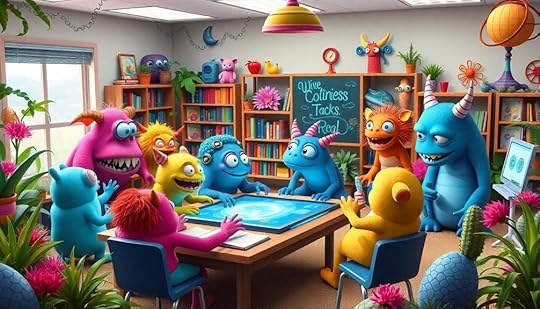
Transforming the future of monster learning systems involves creating curricula that resonate with the unique needs of diverse monster species. Imagine a school where werewolves receive counseling during full moons, and ghost students use ecto-laptops to learn. By incorporating these unique elements, you can foster an environment that encourages inclusivity and socialization among all monster types.
Diverse Curricula: Tailored lessons that address specific abilities and challenges.Technological Integration: Tools designed for monsters, enhancing personalized learning.Collaborative Learning: Fostering understanding between monsters and humans.Shelleys story illustrates how addressing these needs can lead to a more harmonious society. With a focus on ethical considerations, monster students will learn to navigate their unique abilities responsibly.
They'll gain the interpersonal skills necessary for societal integration, promoting respect among different species. By prioritizing collaboration among various monster factions and including human perspectives, future educational systems will create a framework that not only prepares monsters for academic success but also empowers them as responsible members of society.
The future of monster learning systems is bright, and with the right approach, every monster can thrive.
ConclusionIn a world where monsters have their own educational systems, the potential for growth and understanding is limitless. Just like a vibrant tapestry, each thread of their unique curriculum weaves together their identities, challenges, and dreams. By embracing these differences, we can foster a more inclusive society where both monsters and humans learn from one another. As technology bridges the gap, the future of monster education shines bright, promising a harmonious blend of knowledge and creativity.
Kennecott: Alaska’s Abandoned Mine Town Filled With Haunting Stories
Kennecott, Alaska, once thrived as one of the richest copper mines in the world before its closure in 1938, leaving behind eerie remnants and enchanting stories. You can explore the impressive Concentration Mill, a towering wooden structure that processed tons of copper ore. Surrounded by the breathtaking landscapes of Wrangell-St. Elias National Park, you'll find opportunities for hiking, wildlife spotting, and stunning photography. Getting there involves a scenic journey and a footbridge over the Kennicott River. The lingering aura of history invites you to uncover more about this ghost town and its haunting past.
Key TakeawaysKennecott, established in 1900, was a significant copper mine that contributed over $200 million to the U.S. economy before its closure in 1938.The Concentration Mill, a 14-story wooden structure, is a prominent relic of mining history and a major tourist attraction.Visitors can explore the haunting remnants of the ghost town and learn about its rich mining heritage through guided tours.Surrounded by Wrangell-St. Elias National Park, Kennecott offers stunning natural landscapes, including glaciers and wildlife sightings.The journey to Kennecott involves a scenic drive and a footbridge crossing, enhancing its allure as a remote, adventurous destination.Historical Significance of KennecottKennecott holds immense historical significance as one of the richest copper mines in the world, established in 1900. You'll discover that it produced over $200 million worth of copper by the time it closed in 1938. The mine played an essential role during World War I, bolstering the U.S. economy and supporting electrification efforts across the nation.
As you explore this abandoned town, you'll appreciate its designation as a National Historic Landmark in 1986 and its listing on the National Register of Historic Places in 1978, which highlights its historical importance.
Once a bustling mining community, Kennecott now stands as a ghost town, offering a glimpse into the challenging realities of life in the Alaskan wilderness. The remnants of early 20th-century engineering linger, with the Concentration Mill being one of the largest free-standing wooden structures in the world.
As you walk through the site, you'll feel the echoes of its vibrant past and the rich copper deposits that once fueled its growth. Kennecott serves as a reflection of the mining industry's impact and the stories of those who lived and worked in this remote area.
Exploring the Concentration Mill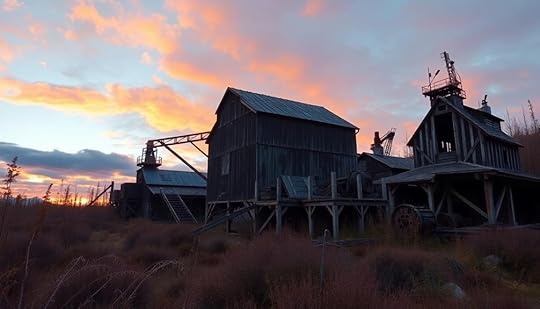
Step into the fascinating world of the Concentration Mill, where the echoes of a bustling mining operation still resonate through its towering wooden structure.
This 14-story marvel processed copper ore from four nearby mines, showcasing the engineering prowess of the early 20th century. As you explore Kennecott's iconic mill, you'll appreciate its status as one of the largest free-standing wooden structures in the world, a reflection of the scale and ambition of its mining operations.
While the aerial tramways once transporting ore to the mill are now gone, their memory lingers in the air.
The National Park Service offers guided tours to help you understand the historical significance of this abandoned site. You'll don a safety helmet and investigate the mining processes that once thrived here, learning how the mill's remarkable structural integrity has withstood environmental challenges over the decades.
Visiting the Concentration Mill allows you to connect with Kennecott's rich history, offering a glimpse into an era defined by ambition and resourcefulness.
Don't miss this opportunity to walk through a piece of history that continues to inspire awe and curiosity.
Natural Wonders Surrounding Kennecott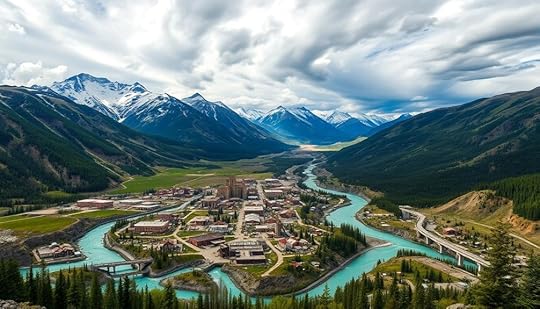
Surrounded by the breathtaking expanse of Wrangell-St. Elias National Park, Kennecott offers an unforgettable glimpse into nature's wonders. This vast, pristine wilderness spans over 13 million acres and is home to stunning geological features shaped by glacial activity.
For those planning to explore this area, it's crucial to have the right camping essentials, ensuring a safe and enjoyable experience. With the iconic Kennecott Glacier nearby, you can set out on various hiking opportunities that reveal the park's unique beauty.
Here are four highlights you shouldn't miss:
Kennecott Glacier: Witness the powerful force of glaciers as they carve the landscape, providing spectacular views and photo opportunities.Root Glacier: Challenge yourself with a hike on this remarkable glacier, where the terrain varies and surprises await around every corner.Wildlife Sightings: Keep an eye out for bears, moose, and other wildlife that roam the area, adding to the park's charm.Snow-Capped Peaks: Marvel at the breathtaking views of mountains soaring above 16,000 feet, serving as a dramatic backdrop to the remains of the mining town.In this remote location, every adventure uncovers the natural beauty that surrounds Kennecott, enchanting nature enthusiasts and explorers alike.
Visitor Activities and Experiences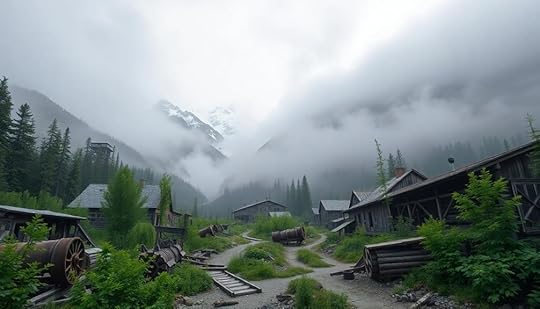
Exploring Kennecott offers a rich tapestry of activities and experiences that draw visitors into its historical and natural wonders.
You can begin a guided tour of the iconic Concentration Mill and other mining structures, where you'll gain fascinating insights into early 20th-century mining history and community life.
For those seeking adventure, scenic flights over the surrounding glaciers provide breathtaking views of the rugged Alaskan landscape, perfect for nature enthusiasts.
Hiking trails lead you to stunning vantage points of the Wrangell Mountains and the Root Glacier, offering ample opportunities to observe wildlife such as bears and various bird species.
If you're keen to dive deeper, the Wrangell Mountain Center offers wilderness studies courses and educational programs that focus on mining history and the local ecology, enriching your experience.
Don't forget your camera! Photography opportunities abound, allowing you to capture the haunting beauty of decaying structures set against the expansive wilderness.
Whether you're exploring the remnants of Kennecott's mining past or immersing yourself in the stunning natural environment, your visit promises to be unforgettable.
Journey to the Ghost Town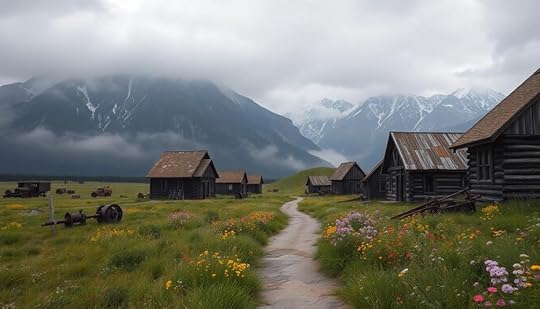
Reaching Kennecott is an adventure in itself, as it requires traversing a challenging route through Alaska's rugged terrain. Your journey typically begins with a seven-hour drive from Anchorage, followed by rutted gravel roads that test your patience and resilience.
Once you arrive in McCarthy, you'll find a small town with a population of just a few dozen residents, offering minimal amenities and no reliable cell service, amplifying the feeling of isolation.
The final stretch to the abandoned mining town involves crossing a footbridge over the Kennicott River, heightening the thrill of your expedition.
To truly appreciate Kennecott's historical significance and natural beauty, consider these four essentials for your trip:
Plan for two days: This allows you to explore the area thoroughly.Choose summer for your visit: Avoid the seasonal challenges of snow and mud.Engage in outdoor activities: Hiking and photography are ideal for capturing the ghost town's charm.Embrace the adventure: The journey is as rewarding as the destination itself.As you step into Kennecott, you'll uncover the haunting stories of its past.
Frequently Asked QuestionsWhat Is the Haunted Ghost Town in Alaska?You're exploring haunted locations in Alaska, and you'll find Kennecott. This ghost town, steeped in history, offers eerie sights and chilling stories of ghostly figures, disembodied voices, and unexplained occurrences that captivate adventurous visitors.
Why Was Kennecott, Alaska Abandoned?When copper veins ran dry, the heartbeat of Kennecott faded. You'll find it abandoned due to the Great Depression's grip, leaving behind crumbling structures and echoes of a once-thriving mining community lost to time.
Is Kennecott Mine Haunted?You might find Kennecott mine haunted, with reports of ghostly sightings and strange occurrences. Locals claim miners' spirits linger, adding to the eerie atmosphere that captivates visitors and fuels tales of the supernatural.
Do People Still Live in Kennecott, Alaska?You'll find that very few people live in Kennecott, Alaska. Most residents left after the mine closed in 1938, and today, it's mostly a ghost town with only seasonal visitors and tourists.
ConclusionVisiting Kennecott might seem intimidating, given its remote location, but that's part of its charm. You'll uncover rich history and stunning landscapes that make the journey worthwhile. The ghost town whispers stories of its past, inviting you to explore and connect with the resilience of those who once thrived here. Don't let distance deter you; immerse yourself in an adventure that promises to ignite your imagination and leave you with unforgettable memories.
November 19, 2024
What if There’s a Monster Justice System to Maintain Order
If there's a monster justice system, it distorts perceptions and undermines accountability. You'd see more focus on securing convictions than seeking truth, especially impacting young Black men facing systemic biases. This system dehumanizes individuals, labeling them as "monsters" and creating deep internal conflicts. Those societal expectations amplify feelings of inadequacy and shame. Furthermore, disparities in representation often pit the wealthy against the marginalized, skewing outcomes. The absurdity lies in prioritizing order over humanity, leading to cycles of injustice. There's much more to explore about how this system affects lives and reshapes societal narratives.
Key TakeawaysA "monster" justice system prioritizes winning over truth, distorting the pursuit of justice and dehumanizing those involved.Racial bias and socioeconomic disparities create an uneven playing field, resulting in harsher outcomes for marginalized individuals.Flawed testimony and conflicting interests among attorneys undermine integrity, complicating the quest for genuine justice.Dehumanizing labels lead to internal conflict, affecting self-perception and hindering reintegration post-incarceration.Artistic expression can reclaim narratives, providing a way to confront societal expectations and challenge injustices within the system.The Absurdity of Justice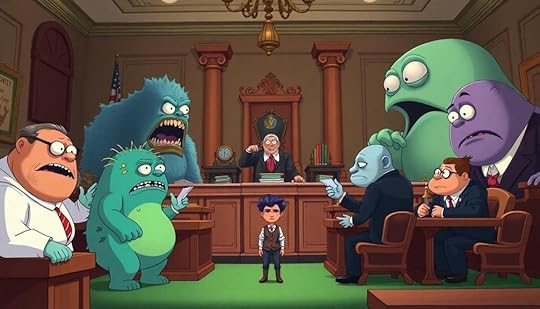
The justice system often feels like a bizarre game, where cases are treated as mere motions rather than serious explorations of guilt or innocence. This absurdity permeates every level, as courtroom officials often display apathy, treating lives and reputations with indifference.
You see, when the focus shifts from true justice to securing a conviction, the emotional weight of each case diminishes. In this adversarial nature of the system, winning takes precedence over uncovering the truth. The human impact of decisions becomes secondary, lost amid procedural formalities.
Young black men, like Steve, face rushed proceedings that reflect systemic biases, reinforcing an assumption of guilt without sufficient evidence. This disregard for thorough investigations feeds into a cycle where justice feels more like a game of strategy than a quest for fairness.
When you look closely, you realize that the absurdity of the justice system doesn't just affect those on trial; it affects society as a whole. It raises questions about innocence and guilt, pushing you to wonder how many lives are altered by a system more concerned with outcomes than the human stories behind them.
Racial Bias and Its Consequences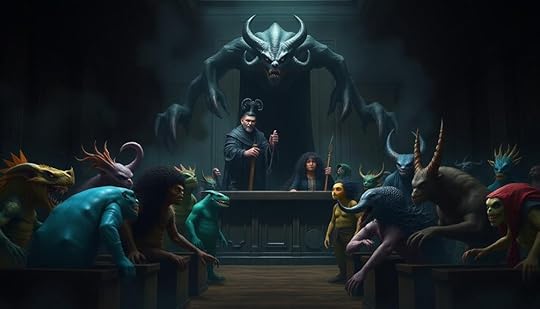
Experiencing racial bias in the justice system can feel like a harsh reality for many, particularly young Black men who often face an uphill battle from the moment they're accused. This presumption of guilt creates an environment of heightened scrutiny, leading to harsher treatments than their white counterparts.
Black defendants frequently encounter systemic inequalities, evident in their higher conviction rates and longer sentences compared to white individuals. These disparities are deeply rooted in history, with echoes of Jim Crow laws still impacting contemporary attitudes and practices.
Economic status further complicates these issues; marginalized communities often lack access to quality legal representation, leaving them vulnerable in a system stacked against them. As jury decisions are influenced by these ingrained biases, the fairness of legal proceedings for Black defendants diminishes.
The combination of racial bias and economic disadvantage results in significant sentencing disparities, perpetuating a cycle of injustice. It's vital to recognize and address these issues, as they not only affect individuals but also undermine the integrity of the entire justice system.
Awareness and action can help dismantle these biases and foster a more equitable legal landscape for all.
The Role of Testimony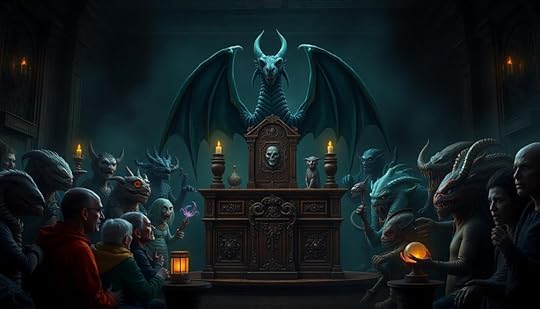
Testimony in the courtroom plays an essential role in shaping a case's outcome, but it often comes with significant flaws. Witnesses frequently have self-serving motives, as seen with individuals like Bolden and Zinzi, who testify for reduced sentences rather than offering unbiased accounts. This distorts personal truth, and you can witness this pressure firsthand through stories like Steve's, where his credibility is questioned on the stand.
Moreover, witnesses like Osvaldo Cruz downplay their involvement to protect themselves, which compromises the integrity of the testimony presented. The legal system, ideally built on truth, is often undermined by the conflicting interests of attorneys. Prosecutors and defense attorneys strategize, manipulating narratives to gain an advantage, which further muddies the waters of justice.
In this high-stakes environment, the pursuit of personal gain frequently clashes with the quest for genuine justice. As a result, you can see how testimonies, rather than illuminating the truth, often lead to distorted representations of events that ultimately shape the fate of those involved.
This highlights the need for a more reliable approach to testimony in the courtroom.
Identity Crisis in the System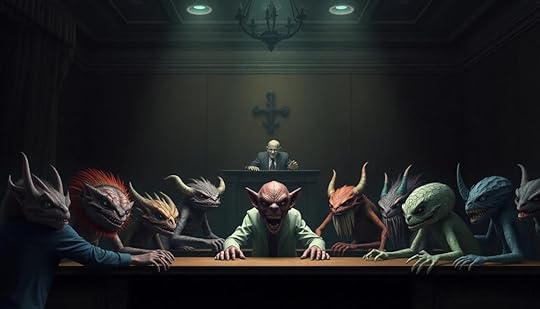
In the justice system, labels like "monster" can distort how you see yourself, creating a painful clash between your true identity and societal expectations.
When you're pressured to fit into these negative stereotypes, it can lead to a crisis that stifles your artistic expression and individuality.
By fostering mindfulness and emotional intelligence, you can navigate these challenges more effectively and enhance your self-perception.
Understanding this struggle is essential to reclaiming your sense of self amid the chaos, as it allows you to align with your true desires and inner peace unlocking the magic of the Vortex.
Labels and Self-PerceptionLabels can profoundly influence how individuals see themselves, particularly in a system that thrives on dehumanizing narratives. When you're labeled a "monster" by the justice system, it can warp your self-perception and spark an intense internal conflict.
For someone like Steve, this label clashes with his true identity—a compassionate individual with talents and dreams. Engaging in mindfulness practices can help individuals like Steve enhance self-awareness and combat these damaging narratives, allowing them to reconnect with their true selves mindfulness practices.
Societal perception, especially for young Black men, often reinforces this bias, leading to immediate assumptions of guilt. This racial prejudice complicates your journey, making it harder to prove your innocence while wrestling with the damaging narratives imposed upon you.
Steve's diary reveals his struggle against the dehumanizing label, acting as a reflective tool for exploring his moral questions and personal identity. Each entry highlights the ongoing battle between who he's and how society views him.
As you navigate this crisis, the labels assigned by the justice system can distort your self-image, leading to feelings of isolation.
It's essential to recognize how these external perceptions not only shape your identity but also impact your mental health, creating a cycle of internal conflict that's hard to break.
Societal Expectations and IdentityThe weight of societal expectations can amplify the identity crisis faced by individuals like Steve, who grapple with being labeled a "monster" by the justice system. This label distorts their self-perception, forcing them to navigate a world that sees them through a dehumanizing lens. As stereotypes take root, they often internalize these negative images, leading to feelings of inadequacy and shame.
Societal ExpectationsIdentity CrisisCoping MechanismGuilt and ShameDistorted Self-ImageArtistic ExpressionCriminalizationInternal ConflictReclaiming IdentityMedia PortrayalLoss of HumanityNarrative ControlIn this environment, individuals like Steve struggle to align their true identity with societal perceptions. The pressure to fit into a mold created by the justice system intensifies their internal conflict. Yet, through artistic expression, they find a coping mechanism that helps reclaim their narrative. By channeling their experiences into creativity, they push back against the labels imposed on them, redefining their identity beyond society's expectations.
Artistic Expression as ReflectionOften, artistic expression becomes a lifeline for individuals like Steve, who confront the harsh realities of a justice system that dehumanizes them. In his screenplay, Steve navigates an identity crisis fueled by public labeling, which brands him as a "monster." This creative outlet serves as a coping mechanism, allowing him to grapple with the societal perceptions surrounding his case.
Through writing, he finds a therapeutic outlet to channel his emotions, creating a structured narrative that contrasts sharply with his chaotic circumstances. By embracing unconditional love, he learns to accept his flaws and imperfections, which empowers him to reclaim his identity.
As Steve crafts his story, he blurs the lines between fiction and reality, reflecting his struggle against systemic injustice. His art isn't just a means of escape; it's a powerful tool for reclaiming his narrative and asserting his innocence.
The Psychological Impact of Labeling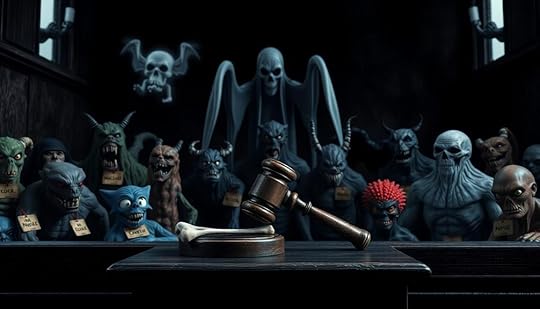
When you're labeled a "monster" by the justice system, it can warp your self-perception and lead to internal conflict.
This stigma doesn't just affect how you see yourself; it also shapes how society views you, making reintegration feel like an uphill battle.
As these labels stick, they can create a cycle of hopelessness that's hard to break.
Labeling and Self-PerceptionHow does being labeled as a "monster" affect one's self-view? When society labels you in this way, it can drastically alter your self-perception. You may internalize the stigma attached to that label, leading to feelings of shame and hopelessness.
Research shows that individuals, particularly from marginalized communities, often begin to embody the negative traits associated with these labels, hindering personal growth and self-worth.
The psychological toll of being labeled a criminal doesn't stop there; it often results in increased anxiety and depression. As you grapple with these emotions, you might feel isolated and alienated from your support network.
This social isolation can push you further into criminal behavior, as you feel disconnected from those who could help you heal and grow.
Moreover, the dehumanizing nature of this labeling not only affects you but also shapes public perception. This perpetuates cycles of discrimination and bias, reinforcing harmful stereotypes and making it even harder to break free from the labels that confine you.
In this monster justice system, your identity becomes entangled with a narrative that can be incredibly damaging.
Internal Conflict and IdentitySteve's internal conflict illustrates the profound psychological impact of being labeled a "monster." This label forces him to confront a dissonance between how society views him and who he believes he truly is. The dehumanizing effects of this label erode his self-worth and challenge his moral worth, as he grapples with the intense pressure of the justice system.
Societal PerceptionsSteve's IdentityLabeled as a monsterSees himself as innocentCriminal stereotypeBelieves in his goodnessMarginalized youthYearns for acceptanceDehumanized existenceAims for self-understandingAs he navigates this crisis, Steve finds solace in writing in his diary. This outlet allows him to process the emotional turmoil associated with the label and societal expectations. The internal conflict he experiences reflects a larger issue faced by marginalized youth, where societal labeling diminishes self-worth and fractures identities. Ultimately, Steve's journey reminds us that identity is complex, and the labels we wear can profoundly shape how we see ourselves and navigate the world.
Societal Impacts of StigmaLabeling individuals as "monsters" within the justice system creates a profound stigma that affects their mental health and self-worth. This labeling often leads to internalized stigma, where you might start to see yourself through the distorted lens of society's judgment. As a result, your self-perception can suffer, leading to anxiety, depression, and feelings of worthlessness.
The discrimination that follows such labeling creates significant barriers to reintegration after incarceration. You may find it challenging to secure employment or housing, perpetuating cycles of poverty and increasing the likelihood of recidivism. This cycle isn't just damaging but can diminish your sense of agency, making you feel trapped by your past rather than empowered to change.
Moreover, the societal perception of you as a "monster" fosters a culture of fear and mistrust, isolating you from the community support systems essential for successful reintegration. Without strong community ties, the path toward rehabilitation becomes even harder.
Addressing this stigma is essential; it can help restore your mental health, enhance your self-worth, and ultimately redefine your future outside the confines of the justice system.
Socioeconomic Disparities in Justice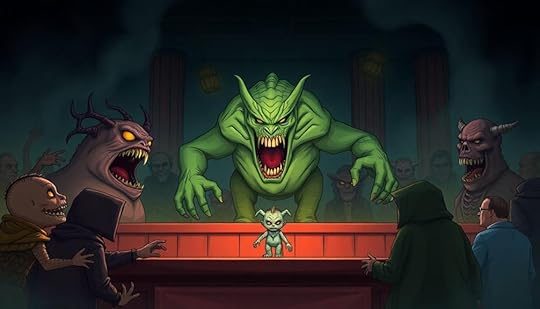
Steering through the justice system can feel like an intimidating task, especially for those from lower socioeconomic backgrounds. The disparities in how defendants are treated based on their financial status are stark and often alarming. Wealthier individuals typically enjoy better legal representation, leading to more favorable outcomes than their poorer counterparts.
FactorsWealthy DefendantsLower-Income DefendantsLegal RepresentationHigh-quality lawyersPublic defenders often overloadedConviction RatesLower conviction ratesHigher likelihood of convictionsSentencing SeverityMore lenient sentencesHarsher sentencingPretrial DetentionLikely to secure bailMore likely to stay detainedThis systemic bias in the justice system affects not only the outcome of cases but also the mental and emotional well-being of individuals. Racial minorities, particularly those from lower socioeconomic backgrounds, often face disproportionately severe sentencing, revealing deep-rooted historical patterns of discrimination. The interplay of economic disadvantage and inadequate legal resources can lead to wrongful convictions, perpetuating cycles of injustice that are difficult to break.
Literature's Reflection on Justice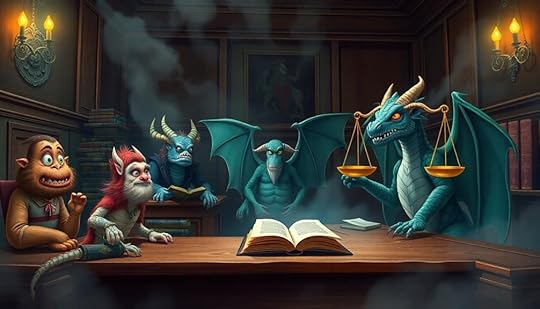
The stark realities of socioeconomic disparities in the justice system aren't just statistical; they resonate deeply in literature. Works like "Monster" by Walter Dean Myers critique the flaws of the American justice system, especially how it disproportionately affects marginalized youth. Through vivid storytelling, you see how prejudices translate into systemic racism, leading to wrongful convictions and a skewed perception of guilt and innocence.
Bryan Stevenson's "Just Mercy" further highlights these disparities, shedding light on the inequities in legal representation that plague countless individuals. His narrative showcases the human cost of a flawed system, urging you to confront the stark contrast between the ideal of "innocent until proven guilty" and the often biased reality of legal proceedings.
Literature acts as a mirror, reflecting historical context and persistent racial disparities in sentencing. It offers personal narratives that bring to life the struggles against injustices faced by many, emphasizing the need for a critical examination of our legal institutions.
In this way, literature not only critiques the justice system but also inspires awareness and dialogue about the urgent need for reform.
ConclusionIn a world where monsters lurk beneath the surface, the justice system often becomes a mirror, reflecting our deepest fears and biases. Each gavel strikes like a thunderclap, echoing the weight of testimony and the shadows of socioeconomic divides. As you navigate this labyrinth, remember that every label can be a chain, binding individuals to their pasts. The struggle for order is a dance between light and darkness, urging you to challenge the monsters within and without.
Ghostly New Orleans: A Spooky Journey Through Voodoo and Mystery
You're about to commence on a enthralling 90-minute tour through the haunted streets of New Orleans, unraveling the secrets of voodoo and its mysterious past. Guided by skilled storytellers, you'll visit significant voodoo sites and learn about the legendary Marie Laveau, the city's iconic "Voodoo Queen." This engaging experience offers a blend of history and local lore, enhanced by guest participation with paranormal equipment. Perfect for those seeking thrills, the tour operates rain or shine, making it a must-do for adventurous spirits. Stick around to uncover more about New Orleans' haunted history and its enchanting cultural tapestry.
Key TakeawaysExperience a 90-minute guided tour exploring the rich history of voodoo in New Orleans, emphasizing cultural fusion and historical accuracy.Visit significant voodoo sites like St. Louis Cemetery No. 1, revealing their vital role in the city's cultural identity.Engage with paranormal equipment, enhancing the interactive atmosphere and guest participation during the tour.Tours operate rain or shine, are suitable for adults only, and require advance booking, starting at $30 per person.Rated 4.2 out of 5 by guests, the tour receives praise for knowledgeable guides and engaging storytelling techniques.Overview of the TourIf you're ready for an unforgettable experience, the Ghostly New Orleans tour offers a 90-minute exploration into the fascinating world of voodoo. This educational tour dives deep into the rich history and cultural significance of voodoo in New Orleans, visiting significant voodoo sites that have shaped the city's unique identity.
You'll uncover the stories behind these haunted locations, guided by skilled storytellers who prioritize historical accuracy over sensationalism. The tour operates rain or shine, ensuring you won't miss out on this enthralling journey, although it's not suitable for younger children.
As you walk through the streets of New Orleans, you'll engage with compelling narratives that dispel myths and stigma surrounding voodoo practices, providing a more nuanced understanding of this often-misunderstood faith.
Advance booking is recommended, with tours starting at just $30. You'll leave with a newfound appreciation for the cultural tapestry of New Orleans, enriched by the tales of its voodoo practitioners.
Join the tour for an enlightening experience that combines storytelling with significant historical insights, and discover the magic of voodoo in this enchanting city.
Historical Significance of Voodoo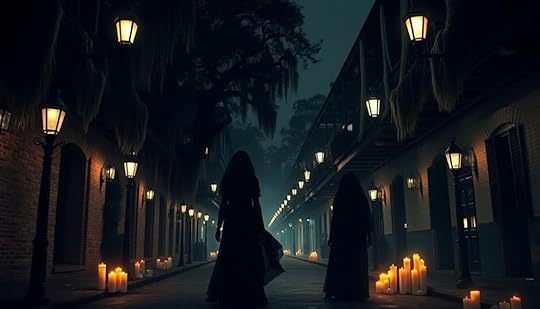
Voodoo holds a profound historical significance in New Orleans, emerging as a vibrant fusion of African, French, Spanish, and Native American spiritual traditions in the 18th and 19th centuries. This unique blend reflects the city's diverse cultural history, where communities came together to create a rich tapestry of beliefs and practices.
Key figures like Marie Laveau, known as the "Voodoo Queen," played crucial roles in shaping these traditions, influencing both local and national perceptions of Voodoo.
Voodoo rituals often include ancestor worship and healing practices, emphasizing the importance of community and maintaining connections with the past. These rituals serve as a means of spiritual expression, allowing practitioners to honor their ancestors and seek guidance from the spirit world.
Important sites like St. Louis Cemetery No. 1 stand as historical landmarks, offering insight into Voodoo's practices and its impact on New Orleans culture and heritage.
Despite the sensationalized media portrayals and hysteria surrounding Voodoo, the religion remains a significant aspect of New Orleans' identity, preserving its rich cultural history and fostering a sense of belonging within the community.
Unique Tour Experience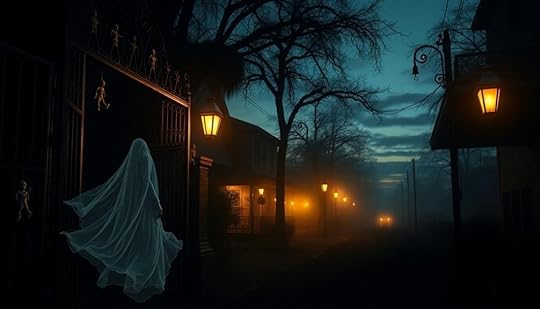
On this unique tour, you'll experience engaging storytelling that brings the rich history of voodoo to life.
Your guide weaves together immersive historical context and enthralling narratives, ensuring you leave with a deeper understanding of this misunderstood practice.
As you explore significant sites, you'll appreciate the depth and complexity of voodoo in New Orleans.
Engaging Storytelling TechniquesThrough the skillful narration of experienced guides, the unique tour experience in New Orleans comes alive with engaging storytelling techniques.
These storytelling guides weave together an engaging narrative filled with historical accuracy and local lore, dispelling myths surrounding voodoo culture. As you explore the haunted streets, you'll gain insights into the real events that shaped its practices, enriching your understanding of this mystical tradition.
Guest participation enhances the immersive experience, allowing you to use paranormal equipment and engage with the stories firsthand. This interactive element makes the history of voodoo and ghost stories more tangible, inviting you into the narrative.
Guides often share compelling anecdotes and personal experiences, creating an electrifying atmosphere where intrigue and emotion flourish. Positive feedback consistently highlights the exceptional storytelling ability of these guides, ensuring memorable experiences throughout the tour.
By blending factual information with enthralling tales, they draw you into a world where the past and present collide, leaving you with a sense of wonder and curiosity.
In New Orleans, every ghost story is a thread in the rich tapestry of its history, and you're invited to be part of it.
Immersive Historical ContextExploring the rich tapestry of New Orleans' voodoo practices, you'll uncover over a century of historical events that shaped this enthralling tradition.
This immersive historical context allows you to grasp the unique blend of cultural influences—African, French, Spanish, and Native American—that contribute to the voodoo religion's depth. As you walk through significant voodoo sites, your guides will share compelling narratives that highlight historical accuracy, ensuring you understand the true essence of this often-misunderstood faith.
The tour aims to dispel myths and stigma surrounding voodoo, providing a clearer picture of its role in New Orleans history.
You'll learn about how public perception has evolved, influenced by both authentic practices and sensationalized tales. Each story enriches your experience, revealing the layers of meaning behind rituals and beliefs.
Rain or shine, this tour remains accessible, allowing you to dive deep into the fascinating world of voodoo.
Related Paranormal Tours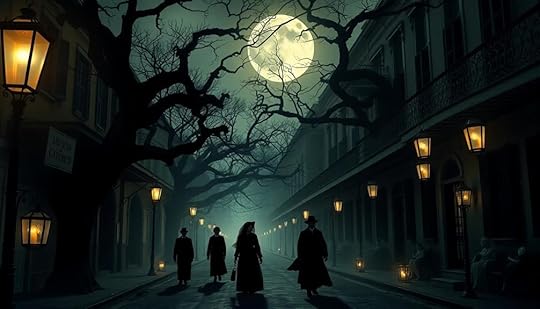
New Orleans pulses with paranormal energy, and there's no better way to experience it than by taking part in one of the city's many thrilling tours. Each tour dives into the rich Voodoo history, ghost stories, and eerie legends that make this city so unique.
Here's a quick look at some of the best options:
Tour NameDurationFocus AreaHaunted Pub Crawl2 hoursGhost stories and nightlifeVampire Walking Tour1.5 hoursLore of the undeadFrench Quarter Ghosts Legends Tour2 hoursDark tales of the historic districtDead of Night Ghosts Tour2 hoursHaunted locations via busAll tours are led by licensed guides who share their extensive knowledge of New Orleans' paranormal history. Whether you prefer the Haunted History Tour or the thrill of the Haunted Pub Crawl, you're sure to uncover the secrets and mysteries of this enchanting city. So why wait? Grab your friends and set off on a ghostly adventure that'll leave you with lasting memories!
Booking Details and Pricing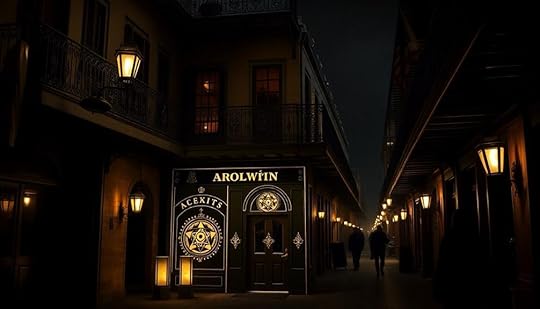
When planning your ghostly adventure in New Orleans, you'll find tours priced between $20 and $60 per adult, with discounts for students and seniors.
It's best to make your reservation at least an hour in advance, as some tours fill up quickly.
Keep in mind that all sales are final, so be sure of your plans before booking.
Tour Pricing StructureFor those enthusiastic to commence on a spooky journey through the haunted streets of New Orleans, the tour pricing structure is straightforward and designed to accommodate various budgets.
If you're an adult aged 13-64, you'll typically pay around $25, while seniors (65+), students (7-17 with ID), and military personnel enjoy discounted rates of $18. Children aged 3-12 can join the adventure for just $14, and infants aged 2 and under are admitted free.
Many tours offer a range of pricing options starting from $20 to $60 per adult, depending on the specific experience you choose. Each tour often includes a knowledgeable local guide who'll take you on an enthralling walking tour, ensuring you grasp the eerie essence of New Orleans.
While gratuities aren't included in the ticket price, they're recommended to show appreciation for your local guide's expertise.
Just remember that reservations must be made in advance, and if you need to cancel, a minimum of 24 hours' notice is required to receive a refund. This pricing structure makes it easy to enjoy a ghostly experience while staying within your budget!
Reservation and Cancellation PoliciesTo secure your spot on one of these eerie tours, it's essential to make reservations at least one hour before departure. When you book, you'll receive confirmation, guaranteeing your place is locked in.
Pricing for tours typically starts at $30, with discounts available for seniors, students, and children, making these spooky experiences accessible for everyone.
Keep in mind that all sales are final, and there's a 100% cancellation penalty. However, if you've booked a prepaid tour and must cancel due to low numbers or adverse weather, you may receive credit for future tours.
Late arrivals won't receive refunds, so it's important to check in prior to your scheduled departure time.
Tours operate rain or shine, so it's wise to have backup plans in case of last-minute cancellations due to weather.
Adhering to these reservation policies and understanding cancellation policies will confirm you have a smooth and enjoyable experience as you explore the ghostly mysteries of New Orleans.
Guest Participation and Equipment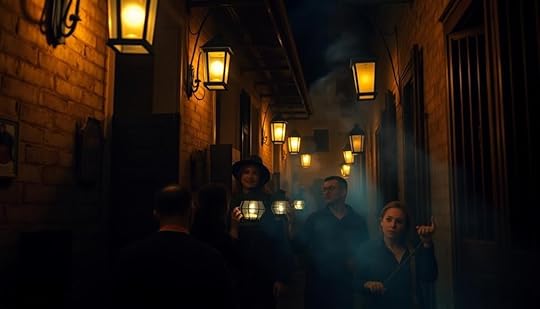
Ghost-hunting gear is available for guests enthusiastic to plunge into the mysterious world of New Orleans' paranormal tours. You can check out professional ghost-hunting equipment at the start, enhancing your guest participation.
Just remember, fees may apply for any lost or damaged equipment.
While starting on this adventure, consider using the following items:
EMF Meter – Detect fluctuations in electromagnetic fields that may indicate supernatural activity.Digital Voice Recorder – Capture any unexplained sounds or voices during your tour.Infrared Camera – Ideal for nighttime photography, some participants have even reported capturing paranormal images.Dowsing Rods – Traditional tools for locating spirits, connecting you to the local lore and haunted history.The tours emphasize storytelling and local lore rather than guaranteed supernatural encounters, so keep your expectations grounded.
Photography is encouraged, but always respect private property and neighborhood residents while engaging in your ghost-hunting endeavors.
As you explore New Orleans' Voodoo Mystery, immerse yourself in the rich tapestry of haunted history, and who knows what supernatural encounters you might stumble upon!
Customer Reviews and Feedback
Many guests rave about their experiences on New Orleans ghost tours, reflected in an impressive average rating of 4.2 out of 5 from 15 reviews on platforms like Viator and Tripadvisor.
As you explore New Orleans premier ghost tour options, you'll find that the feedback often highlights knowledgeable and engaging tour guides. They excel in providing fascinating insights into the city's haunted history, ensuring that each tour is a blend of educational and entertaining storytelling.
Participants frequently mention memorable experiences that investigate the Voodoo Mystery and showcase intriguing paranormal activity. It's no wonder that 90% of reviewers highly recommend these tours, with the Adults-Only True Crime and Ghost Walking Tour achieving a staggering 99% recommendation rate.
Your excitement and curiosity will likely mirror those expressed in customer reviews, as many guests talk about the allure of exploring this haunted city.
While most feedback is overwhelmingly positive, some guests felt misled about certain themes, suggesting a need for clearer communication.
Nevertheless, the overall satisfaction and enthusiasm for these ghost tours make them a must-try experience in New Orleans.
Recommendations for Improvement
Enhancing the ghost tour experience in New Orleans can considerably boost guest satisfaction. Here are some recommendations to improve the overall experience:
Clear Communication: Guarantee that meeting locations and tour details are communicated effectively. This minimizes confusion and helps guests feel more at ease as they prepare for their spooky adventure.Ongoing Training for Tour Guides: Invest in regular training sessions for your tour guides. This won't only enhance their storytelling skills but also guarantee historical accuracy, allowing guests to connect more deeply with the tales of paranormal activity.Flexible Cancellation Policy: Implementing a more lenient cancellation policy can increase customer trust. Guests are more likely to book tours if they know they can change their plans without penalty.Feedback Collection: Regularly gather feedback from guests after tours. This will help identify areas for improvement and allow you to adjust your offerings based on real customer experiences.Exploring New Orleans' Mystique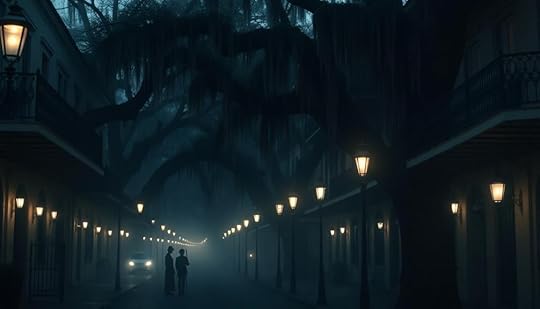
As you wander through the vibrant streets of New Orleans, you'll quickly realize that the city's mystique is woven from a rich tapestry of cultural influences and haunting legends. The air is thick with history, especially in the French Quarter, where voodoo practices have thrived for over a century.
You can feel the echoes of the past, particularly those of Marie Laveau, the legendary voodoo queen, whose spirit still captivates visitors. On guided tours, you'll uncover the truths behind the misunderstood world of voodoo, learning about its roots in African, French, Spanish, and Native American traditions.
As you explore haunted locations and vibrant voodoo shops, the mystery deepens. Each site tells a story, revealing how ancestor worship and community play integral roles in voodoo rituals.
Walking through the streets, you can experience the paranormal energy that lingers in the air, giving life to the city's folklore. New Orleans invites you to investigate its rich history, encouraging you to embrace the magic that lies within its unique cultural influences.
The allure of voodoo and the city's haunted past promise an unforgettable journey.
Frequently Asked QuestionsWhat Is the Best Ghost Tour to Take in New Orleans?To find the best ghost tour in New Orleans, consider your interests. The Adults-Only Ghost, Voodoo, and Vampire Tour is popular, but the Haunted Legends & Scandals Small Group Tour offers a more personalized experience.
What Is the Ghost Tour in New Orleans With Drinking?If you're looking for a ghost tour with drinking in New Orleans, the Haunted Pub Crawl is perfect. You'll visit haunted bars, enjoy local drinks, and hear real spooky stories from knowledgeable guides.
What Is a Voodoo Tour?"Curiosity killed the cat," but on a voodoo tour, you'll satisfy yours. You'll explore New Orleans' rich voodoo history, visiting significant sites while learning about its cultural significance and dispelling myths that surround it.
What Is a Ghost Tour?A ghost tour's a guided experience exploring haunted locations, where you hear enchanting tales about local legends and folklore. You'll engage with the atmosphere, possibly using paranormal equipment, while enjoying the thrill of the supernatural.
ConclusionAs you immerse yourself in the ghostly allure of New Orleans, remember that about 60% of visitors seek out its haunted history. This city, steeped in voodoo and mystery, offers a unique blend of culture and spookiness that captivates all who explore it. Whether you're wandering through haunted streets or discovering hidden tales, you'll find that each corner of New Orleans has a story waiting to be uncovered. Embrace the journey—it's bound to be unforgettable!
Step Into the Shadows of St. Elmo: Colorado’S Haunted Ghost Town
Step into the shadows of St. Elmo, Colorado, and experience a haunted ghost town like no other. Once a thriving mining hub in the late 1800s, the town's remnants now whisper stories of its spectral residents, including the infamous "Dirty Annie." As you wander along Poplar Street, keep an eye out for ghostly figures and unexplained phenomena, especially near the historic hotel. The eerie atmosphere captures the essence of a once-bustling community filled with miners and dreamers. If you're intrigued by the supernatural tales and rich history, there's much more waiting to be uncovered about this fascinating place.
Key TakeawaysSt. Elmo, originally known as Forest City, boomed during the gold rush, attracting over 2,000 residents in just ten days.The town is renowned for its eerie paranormal activity, with ghost sightings, particularly of "Dirty Annie" Stark, drawing visitors.Key attractions include the historic General Store, Poplar Street, and the Home Comfort Hotel, known for ghostly encounters.St. Elmo's historical remnants, like the schoolhouse and church, offer insights into its rich past and supernatural folklore.Accessible via a scenic drive from Buena Vista, St. Elmo operates seasonally, welcoming tourists and ghost hunters from May to October.Overview of St. ElmoHave you ever wondered what it's like to step into a ghost town frozen in time? St. Elmo, originally known as Forest City, offers that unique experience. Settled in 1878, it quickly transformed into a bustling hub by 1880, thanks to the gold and silver rush.
With over 2,000 residents swelling the population in just ten days, St. Elmo became a vital trading center. Today, it stands as one of Colorado's best-preserved ghost towns, perched at an elevation exceeding 9,900 feet and just 20 miles southwest of Buena Vista.
What truly sets St. Elmo apart is its eerie reputation for paranormal activity. As you stroll through its abandoned streets, you might sense the whispers of the past.
Key attractions like the General Store and the Home Comfort Hotel add to the haunting atmosphere, each with its own ghost stories. The Home Comfort Hotel, in particular, is known for its chilling tales, drawing in those intrigued by the supernatural.
With its rich history and ghostly allure, St. Elmo invites you to explore and feel the spirit of a bygone era, making it a must-visit for ghost town enthusiasts.
Getting There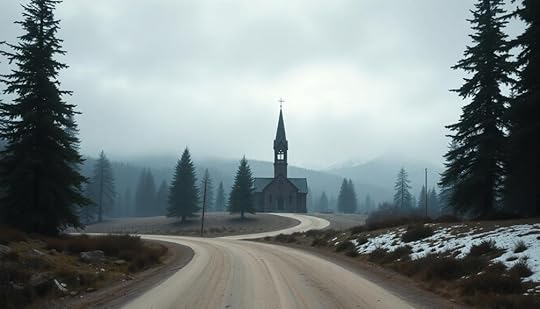
To reach St. Elmo, head 20 miles southwest of Buena Vista, Colorado. The drive is simple, taking you along Highway 24 and County Road 162. As you make your way, you'll enjoy a scenic 19-mile route that reveals breathtaking views of the Sawatch Mountain Range. Keep in mind, St. Elmo sits at over 9,900 feet, making it one of Colorado's highest ghost towns.
Distance from Buena VistaRouteNotable Landmarks20 milesHighway 24 & CR 162Poplar Street19 milesScenic DriveGhost Sightings9,900+ feetHigh ElevationHistoric BuildingsWeather ChangesPrepare AccordinglyStunning ViewsAs you approach, watch for potential weather changes due to the elevation. It's wise to check conditions beforehand. Don't forget to keep your eyes peeled for ghostly apparitions along Poplar Street; you might just catch a glimpse of St. Elmo's haunted past. Enjoy your journey, and embrace the mystery that awaits you in this eerie ghost town!
Key Attractions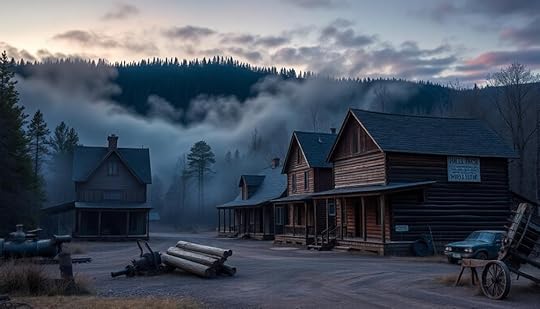
Exploring St. Elmo, you'll uncover a variety of key attractions that bring the ghost town's eerie charm to life.
Start at the General Store, a historic site operating seasonally from May to October. Here, you can experience the town's past and soak up its haunting atmosphere.
Don't forget to check out Poplar Street, where visitors often report ghost sightings and paranormal activity, heightening the town's spooky reputation.
Next, make your way to the Home Comfort Hotel, a focal point for ghostly encounters. Its lace window coverings add to its charm, but it's the stories of "Dirty Annie," a ghostly woman in a white gown, that truly captivate visitors.
Many who've stayed there recount feelings of unease and strange occurrences throughout the hotel.
As you wander through the remnants of the school building, cabins, and church, you'll feel the weight of the town's history and the presence of its ghostly inhabitants.
Each site invites you to explore and experience the supernatural side of St. Elmo, making it a must-visit for those intrigued by the paranormal.
Historical Context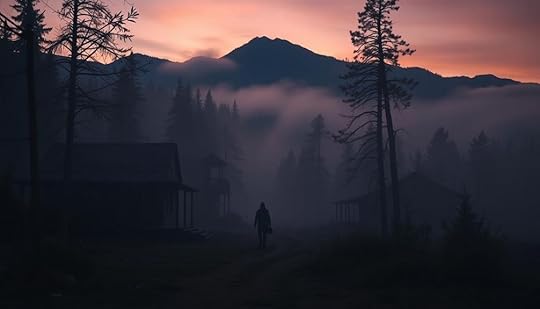
When you think about St. Elmo, consider how the gold rush shaped its early days.
The town exploded in population as miners flocked in, creating a vibrant community seemingly overnight.
However, as the mines closed, you'll see how quickly that prosperity turned into decline, painting a vivid picture of the boom-and-bust cycle of frontier towns.
Gold Rush ImpactThe Colorado Gold Rush transformed St. Elmo, originally known as Forest City, into a bustling hub of activity. Established in 1875, the town attracted thousands of prospectors enthusiastic to find fortune in the surrounding mountains. Within just ten days, the population skyrocketed to over 2,000 residents, thanks to the discovery of gold and silver.
One of the key players in this boom was the Mary Murphy Mine, which became the most profitable mine in the area, yielding over $60 million in gold. This wealth considerably contributed to the town's economic development. The completion of the Alpine Tunnel in 1880 further enhanced St. Elmo's status, facilitating trade and transportation for miners and businesses.
Here's a quick overview of the gold rush's impact on St. Elmo:
ImpactDetailsPopulation BoomOver 2,000 residents in ten daysEconomic GrowthMary Murphy Mine yielded $60 million in goldInfrastructure DevelopmentCompletion of Alpine Tunnel in 1880However, as local mines closed and railroad service ceased in 1922, St. Elmo began its decline, marking the end of its gold rush era.
Population Growth DynamicsSt. Elmo, originally known as Forest City, experienced remarkable population growth dynamics during the late 1870s gold rush. Within just ten days, the town's population skyrocketed to over 2,000 residents, drawn by the allure of gold and silver discoveries. This sudden influx transformed the quiet settlement into a thriving hub of activity, where miners and pioneers sought their fortunes.
The completion of the Alpine Tunnel in 1880 played an essential role in boosting St. Elmo's economy. It improved transportation and commerce, making it easier for goods and services to flow in and out. The Mary Murphy Mine, which produced up to 75 tons of ore daily, was a driving force behind the town's prosperity and population peak during its operational years.
However, as the years progressed, the population began to dwindle. By the early 1900s, mine closures and the abandonment of the railroad led to a drastic decline.
Ghost Stories and Sightings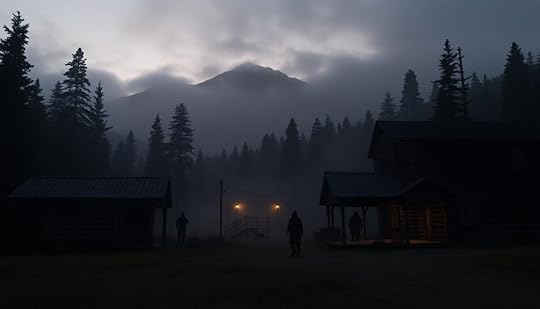
Whispers of the past echo through the empty streets of St. Elmo, inviting you to explore its haunted history. Among the ghost stories that linger in the air, the spirit of Annabelle "Dirty Annie" Stark stands out. Many visitors have reported eerie sightings of a woman in a flowing white gown, peering from the windows of the Home Comfort Hotel. Her protective presence is said to watch over the town, especially the General Store and hotel, making her a central figure in local lore.
As you immerse yourself in the town's ambiance, you might find it comforting to enhance your experience with seasonal decor like GEEORY Fall Pillow Covers, setting the mood for your ghostly adventure.
As you walk through St. Elmo, an unsettling feeling may wash over you, accompanied by unexplainable occurrences. Children often report paranormal activities within the hotel, adding to the growing list of ghostly encounters. The combination of rich history and chilling ghost stories draws tourists enthusiastic to connect with the supernatural.
You may find yourself captivated by the town's haunted charm, as countless accounts reveal a pervasive sense of unease among visitors. Whether you believe in the legends or not, the spirit of Dirty Annie and her watchful gaze make St. Elmo a must-visit destination for ghost hunters and history enthusiasts alike.
Economic Development History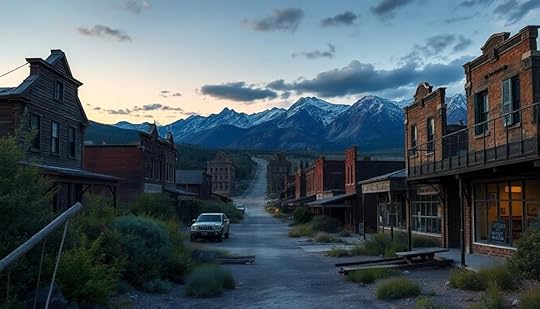
St. Elmo's economic development began with the gold rush, drawing in prospectors enthusiastic for fortune.
As mining operations flourished, the town's population surged, and key transportation routes like the Alpine Tunnel enhanced commerce.
However, this boom was short-lived, as a series of events led to its decline and abandonment.
Gold Rush ProsperityDuring the gold rush, St. Elmo—originally known as Forest City—became a bustling hub of activity. The discovery of gold and silver attracted thousands of miners and entrepreneurs, and within ten days, the population soared to over 2,000.
This explosive growth was spurred by the lucrative Mary Murphy Mine, which produced up to 75 tons of ore daily, totaling over $60 million in gold sales. The completion of the Alpine Tunnel in 1880 further enhanced St. Elmo's gold rush prosperity by improving transportation and commerce.
Here's what fueled the town's vibrant economy:
An influx of miners creating high demand for goods and services.Diverse businesses, including saloons, brothels, and entertainment venues, thriving amidst the rush.The community's reliance on the Mary Murphy Mine, which became a cornerstone of economic success.A spirit of entrepreneurship that transformed a remote mountain area into a lively town.St. Elmo's prosperity during the gold rush left a lasting impact on its history, creating a legacy that still intrigues visitors today.
Mining Operations ImpactMining operations in St. Elmo, originally known as Forest City, played an essential role in shaping the town's economic landscape. Established in 1875, the town surged in population, reaching over 2,000 residents in just ten days during the gold rush. This rapid growth turned St. Elmo into a bustling hub for miners and traders, driven largely by significant gold and silver discoveries in the area.
The Mary Murphy Mine stood out as the most profitable operation, producing about 75 tons of ore daily and generating over $60 million in gold.
However, as time passed, the impact of these mining operations began to wane. The completion of the Alpine Tunnel in 1880 initially bolstered the local economy and facilitated further mining activities, but the eventual closure of the tunnel and the abandonment of the railroad in 1922 marked a turning point.
The decline of mining operations led to a rapid decrease in St. Elmo's population and economic activity. Today, remnants of this once-thriving town are still standing, offering a glimpse into its vibrant past while serving as a haunting reminder of the fleeting nature of prosperity in the mining industry.
Transportation and CommerceWith the completion of the Alpine Tunnel in 1880, transportation and commerce in St. Elmo flourished. This engineering marvel opened up access to the mining region, stimulating economic growth that transformed the town into a bustling trading center.
Gold and silver discoveries attracted miners, leading to a rapid population boom of over 2,000 residents in just ten days. The Mary Murphy Mine played a crucial role, producing up to 75 tons of ore daily, with total sales surpassing $60 million during its operational years.
The establishment of the railroad further enhanced the movement of goods and people, supporting a vibrant commercial landscape. St. Elmo became an essential hub for various businesses, making it a cornerstone of commerce in the late 1800s.
However, as time passed, the decline began with the Alpine Tunnel's closure in 1910 and the end of railroad service in 1922, leading to its transformation into a ghost town.
Economic prosperity peaked due to mining operationsThe railroad connected St. Elmo to larger marketsThe town once buzzed with commerce and tradeToday, it stands as a reminder of its rich historyCommunity Life Dynamics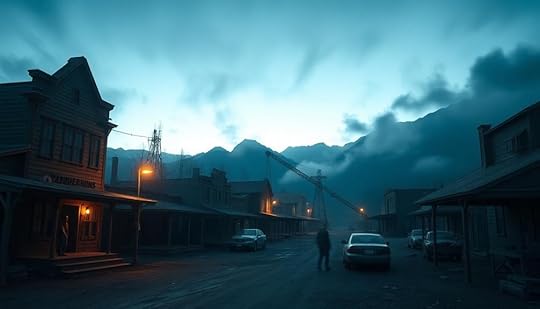
In the late 19th century, St. Elmo thrived as a bustling mining town, characterized by its unique community dynamics. Most of the early inhabitants were single men chasing fortune in the mines, finding camaraderie in local saloons, brothels, and dance houses.
Amidst this vibrant nightlife, the Stark family stood out, managing the local general store and hotel. Their three children experienced a strict upbringing, limiting their freedom to explore the lively surroundings that others reveled in.
As the gold rush attracted more settlers, St. Elmo's population surged, fostering a strong sense of unity among miners, merchants, and their families. Everyone shared the same goal: survival and prosperity in a harsh, demanding environment.
The challenges of frontier life only strengthened their bonds, creating a community where everyone looked out for one another. However, as the town's fortunes declined, many residents left, leaving only a handful, including the Stark family, who remained loyal despite isolation and economic challenges.
This shift in community dynamics transformed St. Elmo from a thriving settlement into a ghost town, echoing the memories of its once-vibrant life.
Tourism and Paranormal Activity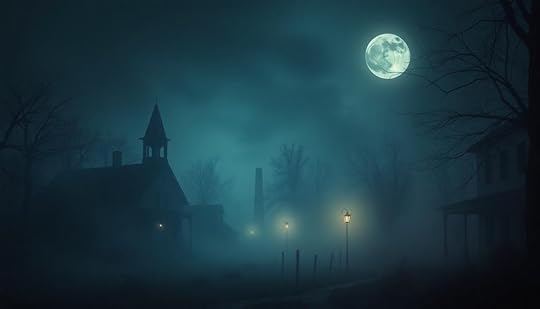
St. Elmo draws in tourists enthusiastic to experience its rich history and high levels of paranormal activity. Known for its stunning mountain scenery and ghostly legends, the town operates seasonally from May to October, and the General Store serves as your gateway to explore historical sites and potentially encounter the supernatural.
Visitors often report ghostly encounters, particularly with the infamous "Dirty Annie," and the legend of Annabelle Stark, a spectral woman in a white dress, heightens the intrigue. For those planning their visit, consider checking out best wet cat foods for picky eaters to guarantee your furry companions are well-fed while you enjoy your adventures.
You can explore various structures like the schoolhouse, cabins, and church, all of which are steeped in ghostly folklore. Here are a few highlights that might just enhance your visit:
Experience the eerie ambiance while wandering through abandoned buildings.Engage with local ghost hunting groups to share stories and tips.Capture the unexplained on your camera during a night tour.Immerse yourself in local legends, enriching your understanding of St. Elmo's history.Despite the devastating fire in 2002, which destroyed key buildings, St. Elmo remains a thrilling destination for those fascinated by its ghostly tales and the allure of paranormal activity.
Frequently Asked QuestionsDo People Still Live in St Elmo Colorado?Yes, people still live in St. Elmo, Colorado, albeit seasonally. A few part-time residents maintain their properties amid the historical structures, keeping the spirit of the ghost town alive despite its dwindling population.
Why Did St Elmo Colorado Become a Ghost Town?St. Elmo became a ghost town due to a devastating fire in 1890, the closure of the Alpine Tunnel, and the abandonment of railroad service in 1922, leading to a sharp population decline and economic collapse.
Is St. Elmo Ghost Town Open?Yes, St. Elmo Ghost Town's open from May to October. You can explore its eerie historical sites, but be prepared for potential ghostly encounters. Enjoy the scenic drive and the town's unique atmosphere during your visit!
What Is the Most Preserved Ghost Town in Colorado?If you're looking for the most preserved ghost town in Colorado, you'll find St. Elmo, showcasing its rich history from the gold rush era. Its scenic beauty and haunting tales make it a must-visit destination.
ConclusionAs you wander through the crumbling buildings of St. Elmo, the crisp mountain air tingles against your skin, and whispers of the past echo in the silence. Shadows dance under the dim light, beckoning you to uncover the ghostly tales that linger here. With each step, you feel the weight of history and the thrill of the unknown. So, embrace the eerie charm of this haunted ghost town, and let the spirits of St. Elmo guide your adventure.
November 18, 2024
What if Some Monsters Keep Humans as Pets
If some monsters keep humans as pets, it flips the traditional pet-owner dynamic on its head. You might find yourself questioning power structures, autonomy, and emotional attachments. This relationship can range from care and companionship to exploitation and psychological trauma. In stories, monsters sometimes nurture humans, creating enriched environments, but they can also strip away individuality and autonomy. The implications of being viewed as property challenge your perceptions of morality and consent. It's a complex web of emotions and ethics that intrigues, revealing new layers of understanding. You'll uncover more about these dynamics and the fascinating narratives that explore them.
Key TakeawaysMonsters keeping humans as pets challenges traditional ownership dynamics, raising ethical questions about autonomy and commodification.Power imbalances in monster-human relationships often lead to psychological trauma and loss of self-worth for human pets.Some narratives depict monsters as nurturing caregivers, creating enriched environments that foster companionship and emotional support.Cultural perspectives on pet ownership reflect societal hierarchies, emphasizing moral implications of viewing sentient beings as property.Humorous portrayals in media highlight absurdity in reversed pet ownership, critiquing human nature and societal norms.Fascination With Monster-Human Relationships
Exploring the intricate dynamics of monster-human relationships reveals a fascinating blend of fascination and horror. Imagine a world where humans become human pets, treated as companions or even commodities by alien species. In narratives like "Fantastic Planet," this dehumanizing perspective flips the traditional roles of ownership, showcasing how monsters might view humans as sub-sapient beings.
The Kiran species exemplifies this commodification through interdimensional pet trade, breeding, and cloning, echoing how we perceive dolphins.
On the other hand, some monsters create enriched environments for their human pets, treating them like high-maintenance companions deserving of care. This dynamic reflects a more caring side, yet it still underscores the power imbalance. In stories such as "All Tomorrows," humans are transformed into Hedons, manipulated for pleasure and control, raising ethical questions about such relationships.
The darker side of this fascination appears with the Daigaram species, who hunt humans for sport, presenting a grim view of humans as both prey and property.
These narratives compel you to confront the complexities of power, ethics, and companionship in the intriguing world of monster-human relationships.
Monsters in Popular Culture
Monsters in popular culture often challenge our perceptions of power and companionship, flipping the script on traditional human-animal dynamics. In the comic book series "The Humans," you see a world where humans serve as pets and laborers for apes, making you rethink who really holds the power.
Similarly, "Fantastic Planet" portrays humans, or Oms, kept as pets by the Draags, showcasing stark themes of dehumanization and exploitation.
In "The Good Dinosaur," the character Spot, a caveboy, embodies loyalty and companionship in a dinosaur-dominated world, blurring the lines between pet and human.
The "Planet of the Apes" franchise further explores this theme, featuring humans treated as subordinates by intelligent apes, challenging your understanding of superiority and hierarchy.
Even in video games like "Final Fantasy XIII," humans face a similar fate, where they're treated as pets by the fal'Cie, raising ethical dilemmas about care and sacrifice.
These narratives invite you to question not just the roles of humans but also the moral implications of power dynamics in a universe where monsters hold the leash.
Power Dynamics in Pet Ownership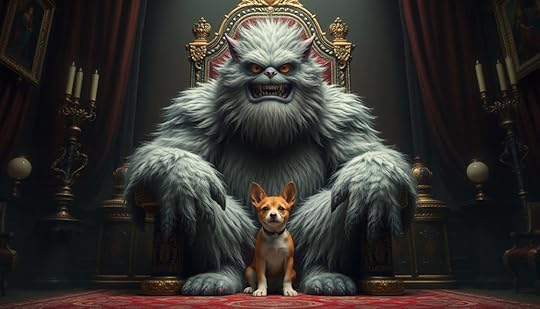
When monsters treat humans as pets, you see a clear shift in power dynamics, where dominance and submission come into play.
This relationship raises important ethical questions about ownership and the treatment of those viewed as subordinate.
You can't ignore how these dynamics affect both parties, often leading to trauma for humans and a skewed sense of companionship for monsters.
Dominance and Submission DynamicsReflecting the complexities of power dynamics, pet ownership often reveals how dominant species view humans as inferior beings. In scenarios where monsters keep humans as pets, you witness a stark representation of dominance and submission. This power imbalance mirrors broader societal hierarchies, where the stronger species perceives the weaker as mere playthings.
Characters in these narratives exhibit traits of loyalty and submission, akin to traditional pets, reinforcing the established dynamics. You might feel the psychological weight of this role, grappling with trauma and identity crises, as your autonomy is stripped away.
The absurdity of this arrangement echoes in stories like "Fantastic Planet," where the dehumanization of humans highlights the cruelty inherent in such relationships.
These portrayals serve as a critique of class and exploitation, illustrating that dominance and submission can manifest not just between species but within human interactions as well. As you navigate this world, you'll recognize the uncomfortable truth: the roles of owner and pet aren't just about care and companionship; they reveal deeper issues of power, control, and the often painful acceptance of one's place in the hierarchy.
Ethical Implications of OwnershipExamining the ethical implications of ownership reveals a troubling landscape where power dynamics reign supreme. When monsters keep humans as pets, it raises significant concerns about autonomy and the commodification of sentient beings. You might consider how these relationships reflect societal norms, prompting you to confront your own biases regarding the pet trade and the ethics of ownership.
Here are some key points to ponder:
Dehumanization: The psychological trauma inflicted on humans treated as pets often leads to a profound loss of agency, adversely affecting their human character.Blurred Lines: Narratives frequently blur the distinction between pets and livestock, and this raises questions about moral responsibilities toward human companions.Care vs. Exploitation: The dynamic of perceived affection can mask deeper motives of control and subjugation, complicating the ethical implications of such relations with humans.Cultural Commentary: These stories serve as powerful commentaries, challenging you to reevaluate the implications of viewing any sentient being as property.Ultimately, the ethical implications of ownership in these scenarios compel you to reflect on the intricate balance of care and exploitation.
Psychological Effects on Humans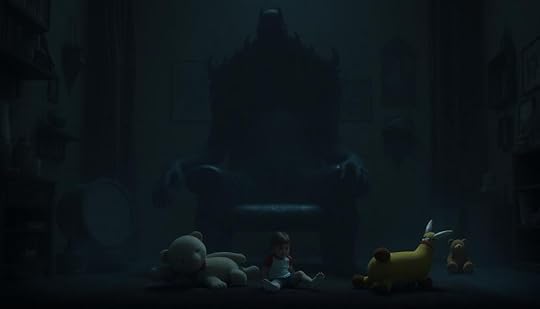
Being kept as a pet by a monster strips you of your autonomy, affecting your sense of identity and self-worth.
This loss can lead to profound psychological trauma, making you feel powerless and inferior.
Over time, you may find yourself grappling with feelings of worthlessness as your individuality fades away.
Loss of AutonomyLosing autonomy can feel like being trapped in a cage, even if the bars are invisible. When you're treated as a pet by a monster, the psychological effects can be profound. You might experience significant trauma, leading to anxiety and depression.
The loss of autonomy strips away your sense of control, leaving you powerless in a non-consensual relationship. This experience can echo the emotional instability found in those with BPD, where a lack of control over one's environment can exacerbate feelings of helplessness and confusion. The emotional struggles may also lead to understanding the differences and similarities between various mental health conditions, as the brain grapples with complex emotions.
Consider the following impacts of this loss:
C-PTSD Development: You may encounter complex post-traumatic stress disorder, marked by shame and guilt.Trust Issues: Forming trusting relationships becomes difficult as your experiences warp your perception of safety.Learned Helplessness: Over time, you might internalize your subordinate status, feeling incapable of change.Stockholm Syndrome: You could unintentionally develop emotional bonds with your captor, complicating your emotional state.Each of these factors contributes to a sense of entrapment, making it hard to envision a life outside your current situation.
The loss of autonomy doesn't just affect your daily existence; it can reshape your entire mental landscape, leaving lasting scars.
Identity and Self-worthThe experience of being kept as a pet by a monster can drastically alter your sense of identity and self-worth. Stripped of your autonomy, you may feel like a mere object rather than a person. This dehumanization fosters feelings of worthlessness, as you constantly compare yourself to traditional pets, internalizing a subordinate self-image.
As your self-esteem diminishes, you might struggle with the trauma of anxiety, depression, or even PTSD, realizing you can't escape your captor. If you've been bred or modified for obedience, cognitive dissonance sets in, forcing you to reconcile your intelligence with your enforced subservience. This conflict can leave you feeling conflicted and confused about who you really are.
Moreover, being treated as a pet can distort your understanding of relationships and affection, isolating you from emotional connections with others. You might find it hard to trust or relate to people, further eroding your sense of identity.
Ultimately, the psychological effects of this experience can create a profound rift in your self-worth, leaving you to grapple with the remnants of autonomy you once had before becoming a monster's pet.
The Role of Companionship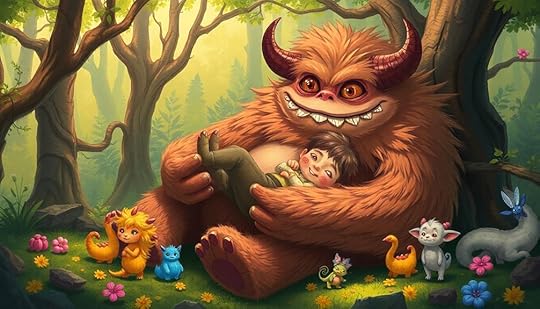
Companionship plays an essential role in the dynamic between monsters and humans, often forming bonds that challenge conventional views of ownership.
These relationships reveal that both parties experience emotional and psychological needs, illustrating how monsters crave loyalty and affection just like humans do.
Consider the following aspects of companionship in this unique context:
Mutual Attachment: Monsters like the Viong view humans as cute companions, fostering a sense of shared affection rather than mere ownership.Emotional Support: The companionship between species can provide emotional enrichment, creating environments where both monsters and humans thrive.Interdependence: These relationships often blur traditional power dynamics, emphasizing a partnership based on mutual benefit and care.Challenging Norms: The portrayal of companionship serves as a critique of human societal norms, pushing back against conventional ideas of ownership to highlight emotional connections.Ultimately, companionship between monsters and humans showcases the potential for empathy and understanding across species.
These bonds reinforce the idea that relationships hold intrinsic value, transcending traditional pet-owner frameworks and emphasizing the importance of emotional connection.
Ethical Considerations of Ownership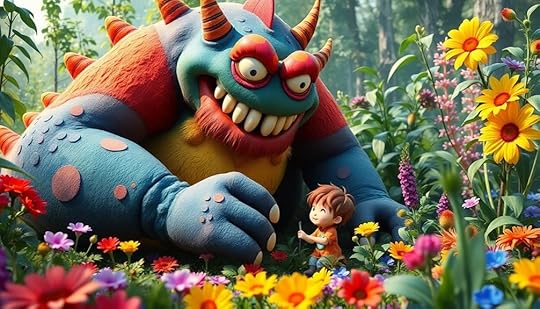
When you think about monsters owning humans as pets, ethical questions about consent and autonomy come to the forefront.
It forces you to contemplate the moral implications of such ownership and how cultural perspectives shape our understanding of what it means to be a pet.
Reflecting on these issues helps you grasp the complexities of power dynamics and the responsibilities that come with ownership.
Moral Implications of OwnershipIn a world where humans are kept as pets, the ethical landscape becomes deeply complex. You can't ignore the moral implications of ownership that arise when sentient beings are treated as property. This scenario forces you to confront uncomfortable truths about moral corruption and the dynamics of power.
Intelligence and Emotional Capacity: Humans possess a level of intelligence and emotional depth that complicates ownership, challenging the very notion of what it means to be "owned."Psychological Trauma: Stories often illustrate the psychological damage inflicted on humans viewed as pets, highlighting the dehumanization and loss of agency that can result from such relationships.Commodification: The portrayal of humans as pets critiques societal norms about class exploitation, revealing the dangers of commodifying sentient beings.Cultural Perspectives: Different species might've varying views on human value, prompting questions about the morality of interspecies relationships based on dominance rather than empathy.These factors create a complicated ethical framework that forces you to reconsider your understanding of ownership and the potential for moral corruption in these relationships.
Consent and Autonomy IssuesThe complexity of ownership doesn't just stop at moral implications; it extends deeply into the domains of consent and autonomy. When considering monsters keeping humans as pets, you must confront the uncomfortable reality that these humans often lack the ability to express their desires or assert their rights.
IssueImplicationLack of ConsentHumans viewed as property can't consent.Power DynamicsMonsters hold dominance over humans.Psychological ImpactTrauma arises from loss of autonomy.Cultural BiasesReflects societal views on commodification.In these narratives, the exploitation of humans shines a light on the troubling power dynamics at play. When individuals are seen as sub-sapient, their agency diminishes, leading to significant psychological consequences. The trauma stemming from such ownership mirrors real-world concerns about how sentient beings are treated.
Ultimately, these fictional representations challenge you to question the morality of ownership itself. Should any being, regardless of species or perceived intelligence, possess another sentient creature? The answer isn't straightforward, and it raises critical questions about consent and autonomy that can't be ignored.
Cultural Perspectives on PetsCultural perspectives on pet ownership reveal how societal values shape our understanding of ethical considerations surrounding the commodification of sentient beings.
When you explore how various alien species, like the Kiran and Viong, treat humans as pets, you'll confront uncomfortable truths about autonomy and consent. This dynamic raises significant ethical questions regarding the moral responsibilities of those with advanced cognitive abilities.
Consider these points as you evaluate this complex issue:
Status Symbol: In some cultures, keeping humans as pets signifies power, reflecting a troubling view of autonomy.Psychological Impact: The trauma experienced by humans kept as pets highlights the detrimental effects of ownership on individual identity and mental health.Commodification of Life: Cloning and breeding practices provoke debates about the morality of viewing sentient life merely as commodities.Historical Parallels: The biases seen in how different species perceive humans often mirror humanity's own history of domestication and exploitation.Reflecting on these perspectives compels you to reconsider the ethics of ownership and the treatment of sentient beings, urging a more compassionate understanding of life.
Monsters as Caregivers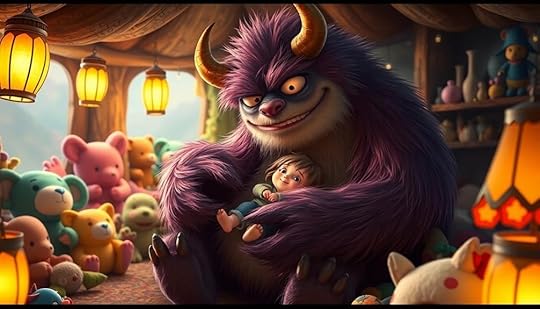
Monsters as caregivers create a fascinating twist on traditional narratives, where these beings often step outside their malevolent roles to nurture and protect humans.
In some stories, you'll find monsters like the Kianta, who treat humans as high-maintenance pets, crafting enriched environments for their well-being. This contrasts sharply with the usual portrayal of monsters, highlighting a more compassionate side.
Then there are the Viong, who engage in gene modification to enhance the physical traits of their human companions, reflecting a deep desire for connection rather than exploitation.
The Kiran species takes this dynamic further, breeding and cloning humans to satisfy their aesthetic preferences, showcasing a complex caregiver-pet relationship.
You'll also encounter the Amoana, fuzzy lamia-like beings that excel in caretaking through bio-experiments, enhancing human capabilities.
In these narratives, the line between pet ownership and companionship blurs, demonstrating that monsters as caregivers can provide nurturing environments that promote human well-being.
Instead of fear, these stories invite you to explore the potential for love and care in the most unexpected of relationships, challenging your perceptions of what it means to be a caregiver.
Humor in Monster Narratives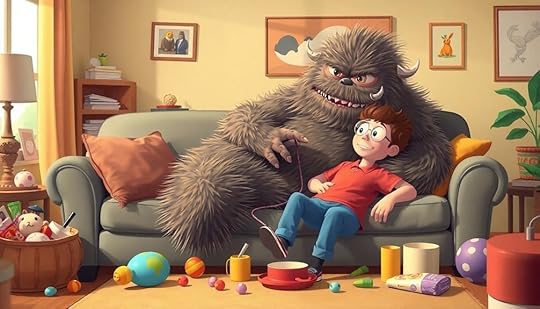
Humor often emerges when the dynamics of pet ownership are flipped on their heads, especially in narratives where monsters take on caregiver roles. These stories cleverly highlight the absurdity of humans being treated like pets, often leading to laugh-out-loud moments.
Characters face ridiculous situations that subvert our expectations, and you can't help but chuckle at the scenarios created.
Consider these examples of humor in monster narratives:
In "Invader Zim," a character mistaken for a pet endures bizarre consequences, showcasing the absurdity of identity."The Good Dinosaur" features a caveboy acting like a dog, poking fun at typical pet behaviors and exaggerating human antics.Parodic adaptations often flip roles, illustrating monstrous creatures attempting to care for humans, resulting in hilariously awkward situations."Planet of the Apes" uses satire to depict humans as pets, leading to misunderstandings that critique human nature and behavior.These narratives not only entertain but also offer a unique lens through which we can examine our own quirks.
After all, who wouldn't find humor in monsters keeping humans as pets?
Alien Species and Human Pets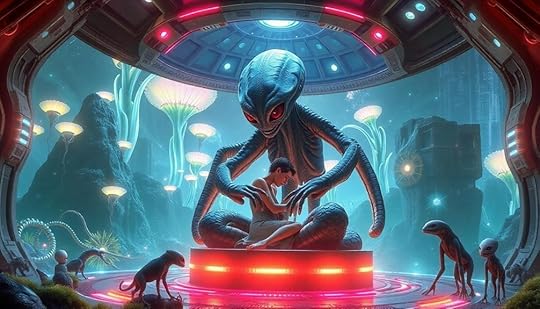
Across the universe, various alien species have developed unique relationships with humans, often viewing them as pets rather than equals. The Kiran, for instance, engage in the interdimensional pet trade, breeding humans and cloning them for companionship. They see you as sub-sapient beings, similar to how humans view dolphins.
Meanwhile, the Kianta species treats you like high-maintenance exotic pets, crafting enriched environments to enhance your durability and strength.
The Viong species finds you cute and engages in gene modification, often misinterpreting abductions as acts of rescue. They believe they're improving your life, even if you don't agree.
Then there's the Amoana, resembling fuzzy lamia, who take it a step further, enhancing you to superhuman levels while conducting bio-experiments.
Cultural biases among these alien species lead to the commodification of human lives. Your distinct personality traits emerge from how you're raised and treated, reflecting your alien owners' values and perceptions.
Whether you're a cherished companion or a mere experiment, your existence as a pet to an alien species raises questions about autonomy, dignity, and the true nature of companionship across the cosmos.
Reimagining Fear and Trust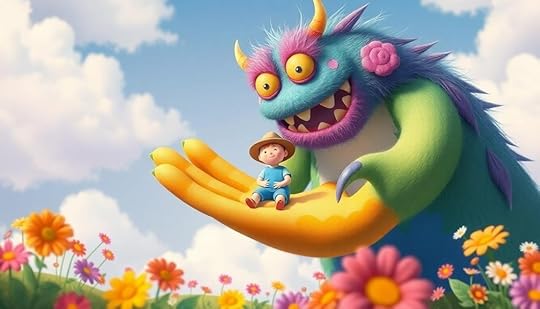
The relationships humans form with their alien captors often challenge our understanding of fear and trust. When monsters keep humans as pets, fear transforms into a complex web of emotions. Instead of viewing these beings solely as predators, you begin to see them as guardians and companions. This shift fosters an environment where trust flourishes, even among the most unlikely of allies.
As you maneuver through this new dynamic, cultivating an abundance mindset can further enhance the emotional depth of these relationships, enabling humans to find value and connection in their experiences.
Loyalty: Humans can develop deep emotional connections, choosing loyalty over fear.Affection: The bond between captor and captive can mirror that of friendship or family.Agency: Humans regain a sense of agency, navigating their new roles within a different power dynamic.Empathy: You discover that monsters, too, possess vulnerabilities, prompting mutual understanding.Such narratives invite you to reconsider societal power structures and challenge conventional notions of domination. The once-terrifying monsters become symbols of companionship, illustrating that even in fearsome encounters, emotional connections can emerge.
ConclusionIn a world where monsters keep humans as pets, you find yourself reflecting on the nature of love and power. Just like a loyal dog or a mischievous cat, these creatures hold your heart in their claws, teaching you that trust can blossom in the most unexpected places. As you navigate this peculiar bond, you realize that sometimes, the scariest monsters hide the deepest kindness, reminding you that companionship knows no bounds—even between species.
San Francisco After Dark: The Spookiest Spots You Must Visit
San Francisco's after-dark scene is loaded with spooky destinations that thrill ghost hunters and curious visitors alike. Start at Alcatraz, where chilling tales of inmates and eerie voices fill the air. Golden Gate Park beckons with the legend of the White Lady, while the ghostly whispers of Sutro Baths echo past joys. Check into the Queen Anne Hotel to meet its spectral headmistress, or venture to City Hall, a site rich with history and hauntings. Each location offers unique charms and spine-tingling tales, ensuring your night is unforgettable. Curious to uncover even more hair-raising spots?
Key TakeawaysAlcatraz offers spine-tingling ghost tours revealing tragic deaths and sightings, especially the spirit in Cell 14D.Golden Gate Park features ghostly legends, including the White Lady and a spectral policeman, attracting paranormal enthusiasts.The Queen Anne Hotel is haunted by the spirit of Miss Mary Lake, particularly in Room 410, known for mysterious phenomena.Sutro Baths echoes with past joy, where visitors may hear laughter and splashing water, linked to lifeguard Theodosius's tragic story.The Curran Theatre is haunted by ticket taker Hewlett Tarr, with reports of eerie noises and ghostly sightings enhancing its chilling reputation.Alcatraz: The Haunted PrisonAlcatraz Island, home to the notorious maximum-security prison, is often considered one of the spookiest places in the United States. With its grim past and infamous inmates, it's no surprise that this site ranks among the most haunted locations in the country.
As you step onto the island, you may feel an eerie chill, a sensation that many visitors report experiencing during ghost tours.
You'll hear disembodied voices echoing through the cold, damp halls, and the stories of tragic deaths add to the chilling lore surrounding Alcatraz. Many guests have claimed to encounter ghostly sightings, including the spirit of a murderer haunting Cell 14D.
These encounters, coupled with feelings of unease, contribute to the prison's haunted history, making nighttime tours particularly spine-tingling.
Exploring Alcatraz isn't just about its infamous inmates; it's also about the ghosts that linger. If you're brave enough, join a ghost tour and immerse yourself in the dark tales of the past.
You might just leave with a chilling story of your own, adding to Alcatraz's legacy of ghostly encounters and hauntings.
Ghostly Legends of Golden Gate Park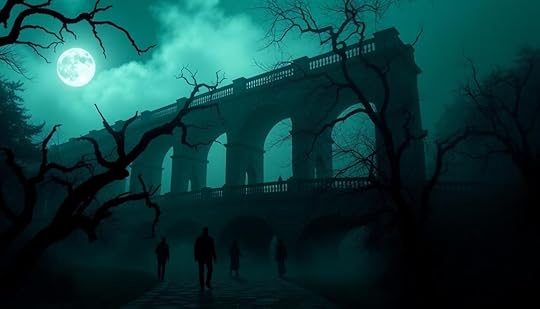
Golden Gate Park is a treasure trove of natural beauty and ghostly legends that captivate both locals and visitors alike. One of the most famous stories revolves around Stow Lake, where the legend of the White Lady has persisted for over a century. This ghostly figure is said to wander the shores, searching for her drowned baby, drawing in those fascinated by her tragic tale.
The park's haunted reputation doesn't end there. Visitors often recount sightings of a ghostly policeman issuing tickets to unsuspecting park-goers, even when no violations have occurred. The eerie atmosphere intensifies on foggy nights, especially around Strawberry Hill, known for its ghostly encounters.
Golden Gate Park's history is steeped in tragic events, including suicides, which only add to its spooky destination allure. These tales attract both tourists and paranormal enthusiasts, enthusiastic to experience the park's supernatural side.
Whether you're exploring the tranquil paths or quietly listening for whispers in the night, you'll find that Golden Gate Park is a place where the past lingers, making every visit an adventure into the unknown.
Eerie Encounters at the Queen Anne Hotel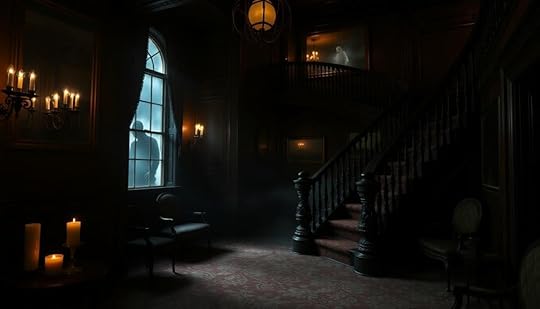
Nestled in the heart of San Francisco, the Queen Anne Hotel beckons ghost hunters and curious travelers alike with its intriguing past. Built in the 1890s as a school for girls, this haunted location is said to be home to the spirit of its former headmistress, Miss Mary Lake. Guests often report friendly ghostly interactions, especially in room 410, where you might experience mysterious phenomena like unexplained noises or items moving on their own.
The hotel's stunning Victorian architecture enhances its eerie atmosphere, making it a unique destination for those seeking both comfort and a brush with the supernatural. You can expect a blend of hospitality and haunting as you explore the hotel's rich history, filled with ghostly tales that have captivated visitors for years.
Imagine settling into your room, only to feel a gentle tug on the covers—Miss Mary might just be tucking you in for the night.
Whether you're a skeptic or a believer, a stay at the Queen Anne Hotel promises an unforgettable experience, as you investigate one of San Francisco's most famous haunted locations.
The Specters of Sutro Baths
Few places in San Francisco are as steeped in ghostly lore as the Sutro Baths, the remnants of a grand indoor swimming complex that once thrived in the late 19th century.
Now, it stands as one of the most haunted places in San Francisco, drawing ghost hunters and paranormal enthusiasts alike. As you wander through the eerie ruins, you might hear sounds of laughter, clinking glasses, and splashing water—echoes of spirits reliving their joy in this former recreational paradise.
The legend of a lifeguard named Theodosius adds to the Sutro Baths' mystique. He tragically drowned while trying to save someone, and many believe his spirit still lingers, watching over the site.
This eerie reputation is further heightened by rumors of ritual sacrifices that reportedly took place here, making your nighttime exploration even more thrilling.
For the best chance of encountering these spectral visitors, venture out after dark. The haunting atmosphere, coupled with vivid ghostly encounters, transforms the Sutro Baths into a chilling yet enthralling experience you won't soon forget.
Chilling Stories From the Curran Theatre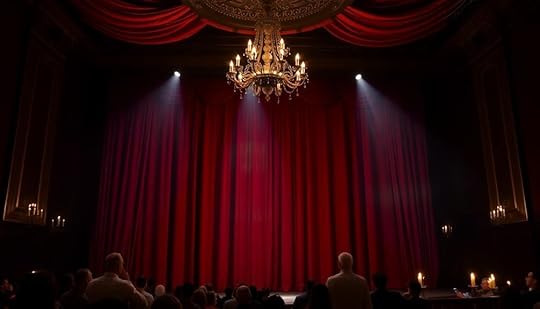
As you step into the Curran Theatre, you're not just entering a beautiful venue; you're stepping into a domain filled with ghostly tales.
The haunting of ticket taker Hewlett Tarr, whose spirit still wanders the lobby, is just one of many chilling stories that echo through its walls.
Combine that with legends of ghostly performers, and you've got a place that's as intriguing as it's eerie.
Ghostly Performers' LegendsIf you ever find yourself at the Curran Theatre, be prepared for more than just an enthralling show. This historic venue, renowned for its elegant architecture, is steeped in ghostly performers' legends that keep the spirit of live entertainment alive—even after dark.
Many guests and staff have reported eerie noises and ghostly sightings, especially in the lobby and during performances.
One prominent specter is Hewlett Tarr, a ticket taker tragically murdered in 1933. His presence lingers, contributing to the theater's haunted reputation. Visitors often feel an unexplained chill or see fleeting shadows, adding layers to the legends of a bustling stage that continues to echo with the past.
The Curran Theatre thrives on its rich history of performances, enchanting audiences while enticing paranormal investigations. If you're feeling brave, consider joining one of the ghost tours that explore the spooky stories behind the curtain, merging entertainment with chilling historical narratives.
Whether you're a skeptic or a believer, the ghostly performers' legends at the Curran Theatre promise an unforgettable experience that transcends time.
Haunting of Hewlett TarrThe haunting of Hewlett Tarr adds a spine-tingling layer to the already rich tapestry of stories at the Curran Theatre. In 1933, Tarr, a ticket taker, met a tragic end during a robbery in the theater's lobby. Since then, his ghost has reportedly lingered, creating a haunted reputation that fascinates both theater enthusiasts and ghost hunters alike.
Visitors and staff often recount eerie experiences, from unexplained noises echoing through the elegant halls to sudden cold spots that chill the air. You might even catch a glimpse of Tarr's spectral figure, adding an unsettling twist to your night at the theater.
Paranormal investigations have been conducted here, revealing connections to the tragic events that unfolded on-site, further solidifying the Curran Theatre's status as a hotspot for spooky experiences.
The combination of its stunning architecture and chilling tales makes it a must-visit destination.
Mysteries of Manrow House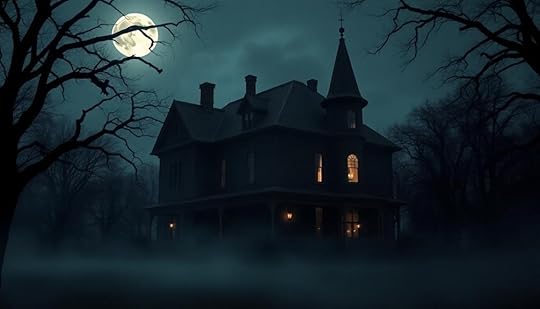
When you step into Manrow House, you can feel its haunted history wrap around you like a cold fog.
Since the family moved in back in 1851, strange noises and ghostly apparitions have plagued its halls, earning it the ominous title of the "house of demons."
Visitors often share eerie experiences, from sudden cold spots to inexplicable movements, ensuring its place in local ghost lore.
Haunted History OverviewStepping into the eerie atmosphere of Manrow House, you can't help but feel the weight of its haunting history. Built in 1851, this notorious haunted location holds a dark reputation, often dubbed the "house of demons." The moment the family moved in, strange occurrences began, and initial attempts to rid the house of restless spirits only intensified the hauntings. Visitors often hear unsettling noises and witness ghostly apparitions, which has made it one of the spookiest spots in San Francisco.
The connection to local ghost stories is significant, attracting paranormal enthusiasts keen to experience its eerie past. Here's a quick overview of Manrow House's haunted history:
YearEventDescription1851Family Moves InHaunting begins with strange noises.1860Increased HauntingsAttempted exorcisms lead to more activity.1900Ghost SightingsReports of encounters with various spirits.2023Ongoing InterestContinues to attract visitors and ghost stories.The haunting legacy of Manrow House adds to San Francisco's rich tapestry of ghostly narratives and historical intrigue.
Eerie Experiences ReportedWhispers of the past echo throughout Manrow House, enchanting anyone brave enough to enter. This eerie spot in San Francisco has been haunted since 1851, earning its reputation as the "house of demons." As you step inside, the chilling air wraps around you, filled with ghost stories that have captivated both locals and visitors alike.
Reports of unsettling sensations and ghostly apparitions are common among those who've dared to explore the house. You might catch a glimpse of a shadowy figure gliding past or hear inexplicable noises resonating through the halls. These eerie experiences are a confirmation to the house's dark history, where initial attempts to rid it of spirits only invited more hauntings.
The local lore surrounding Manrow House fuels its status as a prime destination for paranormal enthusiasts. Each visit unravels a new layer of its haunting narrative, drawing you into a world where the past and present intertwine.
Spirits of City Hall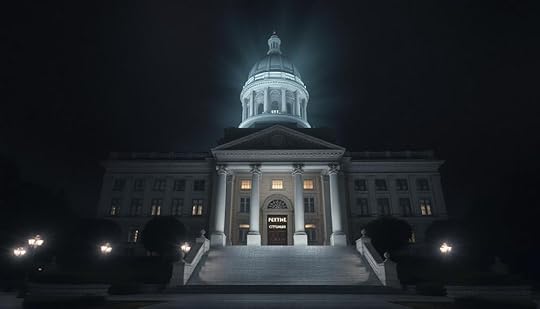
City Hall stands as a haunting symbol to San Francisco's tumultuous history, with its breathtaking architecture masking a darker narrative. Rebuilt in 1915 after the devastating 1906 earthquake, this historical landmark is notorious for its haunted reputation. Many visitors and staff report strange noises echoing through the halls and a chilling sensation of being watched, contributing to its eerie ambiance.
The site is historically significant, marked by the tragic assassination of Mayor George Moscone and Supervisor Harvey Milk in 1978, which adds layers to its ghostly encounters. As you explore, you might feel a cold spot brush past you, a reminder of the lives lost within these walls.
For those keen to investigate further, guided ghost tours frequently include City Hall, where stories of its troubled past unfold. These tours attract both tourists and paranormal enthusiasts seeking to connect with the spirits that linger here.
Whether you believe in the supernatural or not, the stories and atmosphere of City Hall make it a must-visit for anyone intrigued by San Francisco's ghostly narrative. Embrace the thrill, and you might just encounter a ghost or two!
Frequently Asked QuestionsWhat Is the Most Haunted Place in San Francisco?You'll find Alcatraz Island is often considered the most haunted place in San Francisco. Visitors report ghostly apparitions and eerie sensations, making it a must-see for anyone intrigued by the supernatural and dark history.
What Streets to Walk in San Francisco?When you walk Lombard Street, it's like traversing a twisting river. Try Stow Lake in Golden Gate Park for whispers of the White Lady, or the Presidio's paths echoing with ghostly tales. Embrace the adventure!
ConclusionAs you explore San Francisco after dark, you'll uncover its haunting history and ghostly legends. Did you know that about 40% of Americans believe in ghosts? This statistic highlights just how many people are intrigued by the supernatural, making your visit to these spooky spots even more thrilling. Whether you're wandering through Alcatraz or listening to tales from the Curran Theatre, you'll feel the city's eerie charm lingering in the shadows, waiting to share its secrets.
November 17, 2024
What if Monster Communities Have Respected Leaders
If monster communities had respected leaders, you'd see a dramatic shift in dynamics. Respectful leadership fosters open communication and trust, leading to higher morale and productivity. Instead of toxic environments, followers would feel valued and engaged, promoting a sense of belonging and shared goals. With emotional intelligence at the forefront, leaders would inspire collaboration and empathy, reducing feelings of isolation. The result? Healthier, happier communities where everyone thrives. By embracing these principles, monster communities could redefine strength through unity and understanding. Stay tuned to uncover how these changes might take shape in practice.
Key TakeawaysRespected leaders in monster communities foster open communication, enhancing trust and collaboration among members.Emotional intelligence in leadership promotes a positive environment, reducing burnout and increasing engagement.Collective responsibility and shared goals create a sense of belonging and accountability within the community.Inclusive health initiatives align with community values, strengthening connections and overall well-being.Adaptable leaders inspire voluntary contributions, emphasizing collaboration over individual ambitions for community success.Understanding Monstrous Leadership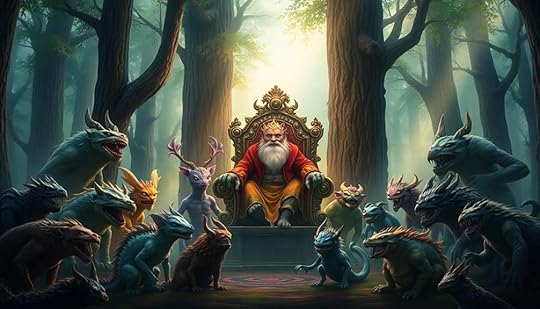
Monstrous leadership can feel like a dark cloud hanging over a workplace, impacting morale and productivity. When leaders exhibit overbearing behaviors rooted in a lack of emotional intelligence and social skills, they can create a toxic environment. You might notice that these leaders often cross boundaries, disrupting workplace dynamics and leaving employees feeling disheartened.
In some cases, these leaders may employ tactics reminiscent of gaslighting in relationships, causing team members to doubt their perceptions and experiences. Understanding monstrous leadership involves recognizing how these actions affect team cohesion. Effective management can counteract these negative traits by fostering open communication and mutual respect among colleagues.
It's vital for leaders to engage with diverse viewpoints and respect boundaries to achieve organizational goals.
Moreover, passionate leaders who build trust and consistently engage with their teams can mitigate the damaging effects of monstrous leadership. By creating a positive atmosphere, they inspire motivation and cooperation among staff.
It's up to you and your colleagues to collectively cultivate a workplace culture that values respect and accountability. If you're in a position of influence, prioritizing effective management techniques can transform the dynamics of your team, pushing back against the insidious nature of monstrous leadership and paving the way for a healthier, more productive environment.
The Impact of Followers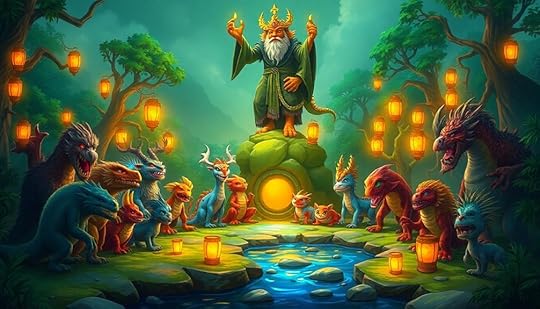
Followers play an essential role in shaping the dynamics of a community, especially in relation to their leaders. When you're part of a community led by respected individuals, you're likely to feel valued and engaged. This connection fosters a sense of belonging and reduces isolation, which can lead to monstrosity.
Furthermore, just as in the health and wellness context where strong community ties can promote better well-being, engaged followers can enhance the overall health of a community strong community ties.
Consider these key impacts of dedicated followers:
They enhance open communication, allowing concerns to be voiced.They inspire collaboration through shared decision-making.They model empathy and compassion, strengthening community bonds.They establish a culture of trust that mitigates self-absorption.They promote collective responsibility, reinforcing accountability.However, when leadership fails, it's often because followers feel disconnected or undervalued. The best leaders understand that their influence extends beyond their own actions; they actively involve you in the community's growth.
You come to realize that your engagement is crucial for a healthy culture. By fostering an environment of support and connection, respected leaders and their followers can create a cohesive community, ensuring emotional and social dynamics thrive.
The relationship between leaders and followers isn't just beneficial; it's essential for community well-being.
Emotional Intelligence in Leadership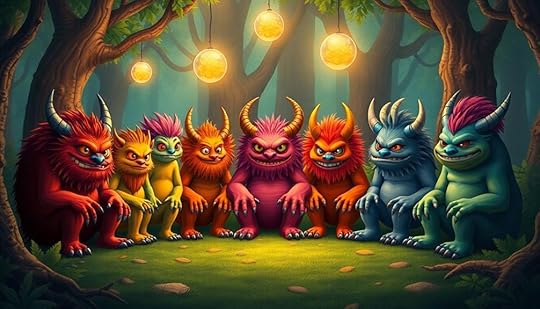
Effective leadership thrives on strong interpersonal connections, and emotional intelligence plays a vital role in this dynamic. Leaders need to recognize and manage their emotions as well as those of their team members. This ability fosters a positive workplace environment, enhancing team dynamics and collaboration.
When you develop your emotional intelligence, you can navigate challenging interpersonal situations more effectively, ensuring open communication and building strong relationships with your followers. Establishing healthy boundaries can further enhance this process, promoting respect and preventing burnout within the team, which is essential for sustained performance and morale healthy boundaries in relationships.
Research suggests that leaders with high emotional intelligence are more likely to inspire trust and loyalty among their team. This, in turn, boosts employee engagement and retention rates. Would you argue that empathy, self-regulation, and social skills are essential competencies for effective leadership? They certainly are, as they contribute to better conflict resolution and collaborative problem-solving.
Organizations that prioritize emotional intelligence in their leadership development programs often see improved performance and a more inclusive workplace culture. One day, when emotional intelligence becomes a cornerstone of leadership training, we'll likely witness the transformation of many teams into cohesive units that thrive on collaboration and mutual respect.
Embracing emotional intelligence in leadership is vital for achieving organizational goals.
Building Trust and Engagement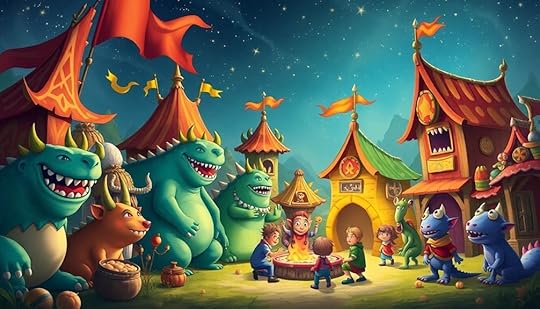
Building trust in your monster community starts with open communication.
When you encourage everyone to share their thoughts, you create a space where collective responsibility thrives.
This way, members feel valued and engaged, strengthening the bonds that hold your community together.
Fostering Open CommunicationOpen communication is essential for cultivating a culture of trust within any organization. When you foster open lines of communication, your team members will feel safe sharing their thoughts and feedback. This leads to enhanced engagement and collaboration.
Here are some key strategies to implement:
Establish regular check-ins to gauge employee sentiment and address concerns proactively.Create a transparent environment where leaders openly share their decision-making processes.Practice active listening and provide genuine responses to employee input.Encourage informal communication through team-building activities or open forums.Promote feedback loops that allow for continuous improvement and dialogue.Encouraging Collective ResponsibilityWhile fostering a sense of collective responsibility might seem challenging, it's essential for creating a trustworthy and engaged community. By encouraging open communication, mutual respect, and collaboration, you can counteract the negative effects of monstrous leadership. Here's how you can promote collective responsibility:
ActionBenefitsImplementationEngage with followersBuilds trust and connectionRegular feedback sessionsFoster empathy and compassionCreates a supportive environmentTeam-building activitiesSet shared goalsEnhances belongingCollaborative goal-settingInvolve everyone in decisionsIncreases engagement and satisfactionInclusive brainstorming sessionsRecognize contributionsDevelops accountabilityCelebrate team achievementsWhen leaders actively engage with your interests and value your feedback, they cultivate a culture of collaboration. This not only mitigates the self-absorption often seen in monstrous leaders but also promotes a dynamic workplace. By implementing these practices, you'll create an environment where everyone feels invested in the community's success, leading to a healthier and more productive atmosphere.
Transformative Health Initiatives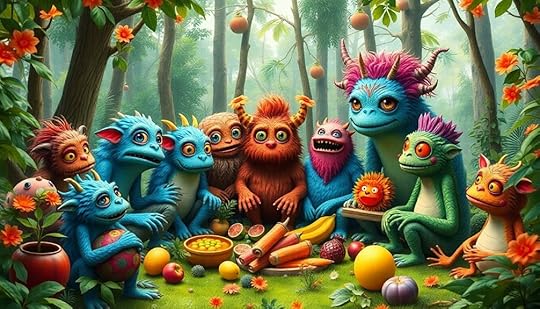
Transformative health initiatives in monster communities ignite a collective commitment to well-being by aligning health promotion efforts with the community's core values.
When you engage community members in these initiatives, you foster a culture that prioritizes collaboration and mutual respect. This not only enhances motivation but also reduces disengagement, leading to a more supportive environment.
Consider these key aspects of successful health initiatives:
Open Communication: Encourages transparency and builds trust among community members.Cultural Relevance: Tailors health programs to fit the unique characteristics of monster communities.Inclusivity: Avoids segregation, fostering a sense of belonging and community cohesion.Shared Goals: Focuses on collective achievements rather than individual accolades, enhancing participation.Employee Morale: Improves overall workplace dynamics by promoting well-being.Navigating Leadership Challenges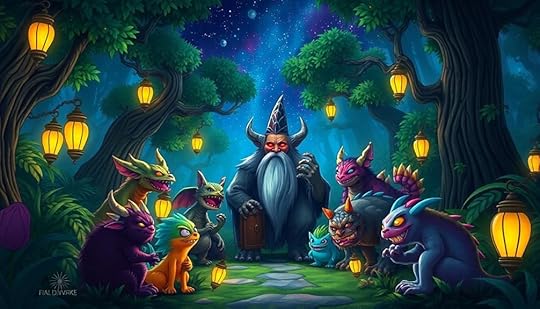
Steering leadership challenges in monster communities demands a nuanced approach that builds on the collaborative spirit fostered by health initiatives. As a leader, prioritizing open communication and mutual respect is essential. These practices help counteract the potential negative effects of monstrous leadership behaviors, creating an inclusive environment for your followers.
Self-awareness plays a significant role in maneuvering challenges. Reflect on your personal responsibility and learn from feedback regarding your decisions' impact on team dynamics. Building trust is equally important; regularly engaging with your community's interests inspires loyalty and commitment, which are essential for overcoming obstacles.
You must also balance empathy with firmness. While it's important to be approachable, don't shy away from making decisive choices that align with your community's goals and values. This balance guarantees your followers respect your authority while feeling valued.
Lastly, embrace continuous learning and adaptation. The complexities of team dynamics require leaders to be proactive in addressing issues and fostering a healthy workplace culture. By cultivating these skills, you can effectively manage the unique challenges that arise in monster communities, leading your team to success.
Community Perspectives on Leadership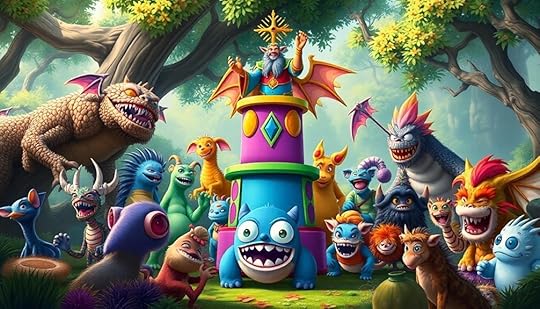
Understanding community perspectives on leadership is essential for fostering an environment where everyone feels valued and heard. In monster communities, effective leadership isn't just about authority; it's about creating a shared vision that drives collective goals.
Here are some key aspects of community perspectives on leadership:
Vision-Driven Focus: Leaders prioritize community goals over personal ambitions.Trust and Integrity: Earning respect takes time through consistent actions and transparent communication.Inspiration over Obligation: Successful leaders motivate members to act willingly, fostering empowerment.Adaptability: Leaders must respond to the unique needs and challenges of their communities.Active Involvement: Engaging in co-creating services strengthens collaboration and shared responsibility.When you understand these perspectives, you recognize that respected leaders cultivate trust and inspire collective action.
They're not just figureheads; they're integral to the community's identity and resilience.
Redefining Strength and Identity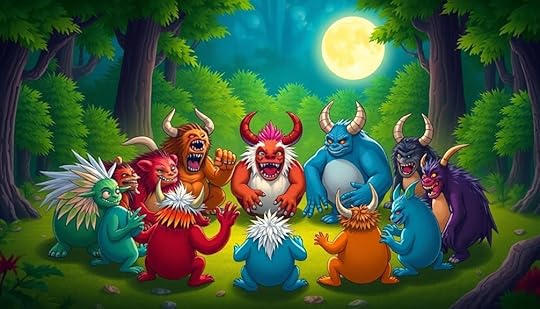
In many monster communities, redefining strength and identity means embracing the complexity of human nature, where both good and evil traits coexist. You'll find that effective leaders understand this duality and use it to foster growth. They prioritize humanization and connection, ensuring everyone feels valued and respected. This approach transforms potential monstrosity into collective strength, creating a vibrant community.
Strong identities are built on trust and integrity. Leaders inspire you to work voluntarily towards shared goals, reinforcing your sense of belonging and purpose. You're encouraged to contribute to the community, not out of obligation, but from genuine commitment.
Moreover, respected leaders recognize the isolating effects of loneliness and endeavor to create inclusive environments. By promoting collaboration, they enhance the resilience of your community. The metaphor of the "warrior in a garden" encapsulates this balance, illustrating how leaders can be ready for conflict while nurturing individual growth.
As you engage in this supportive atmosphere, you learn that true strength lies not just in power, but in understanding, compassion, and the ability to unite diverse qualities for the greater good.
ConclusionIn a world where monsters lead with wisdom, their communities flourish like wildflowers in a sunlit meadow. Embracing emotional intelligence, these leaders weave trust and engagement into the fabric of their society. As they tackle challenges with resilience, they redefine strength, proving that power isn't just a roar but a gentle whisper of understanding. Together, they create a vibrant tapestry of unity, showing us that even the most fearsome can foster hope, compassion, and transformative change.



